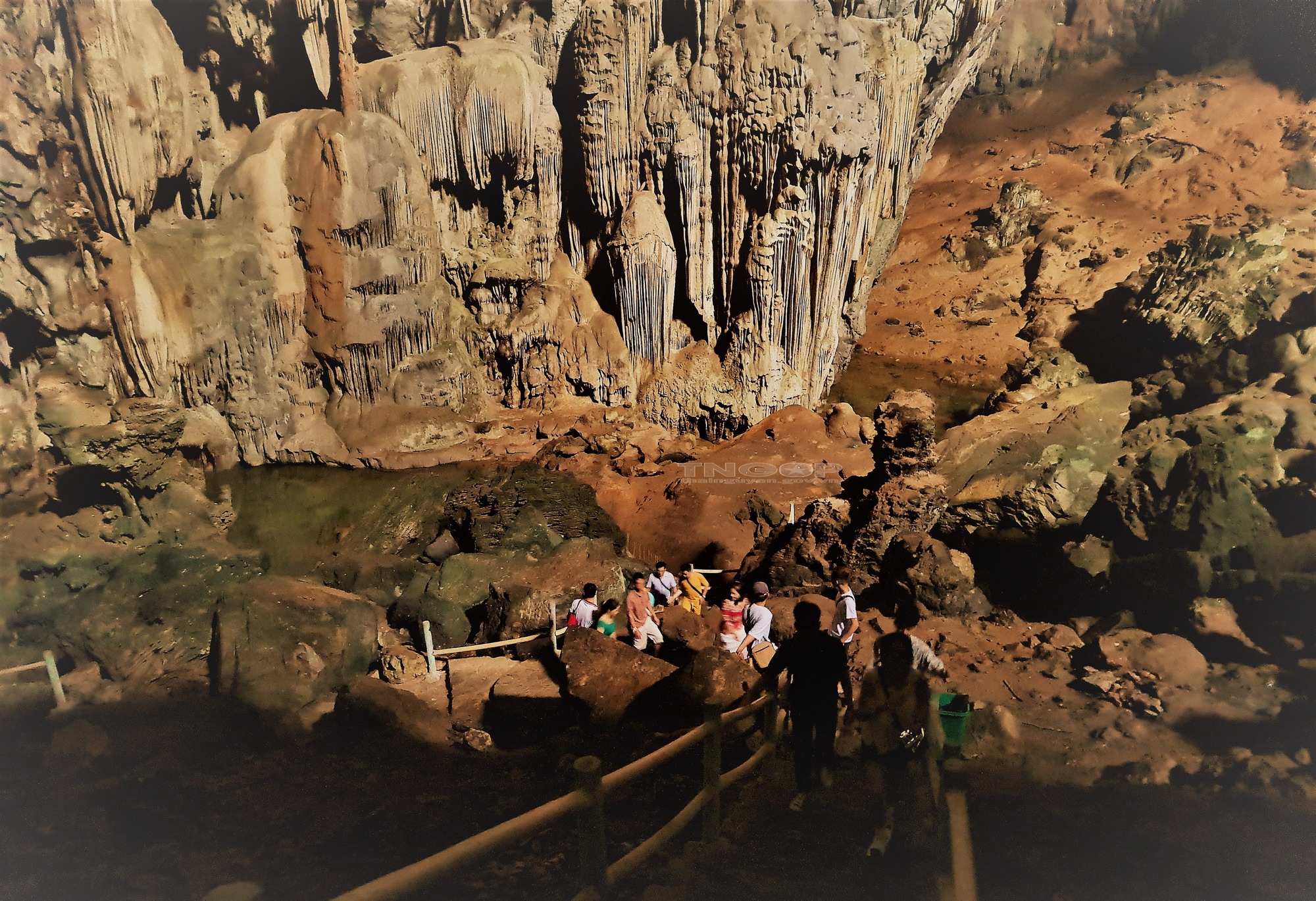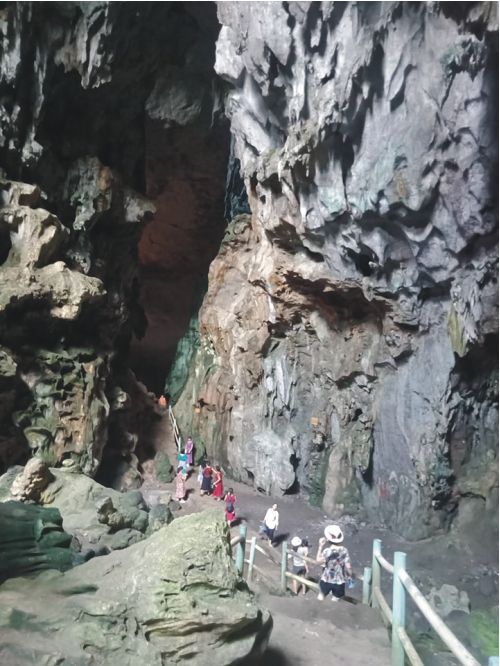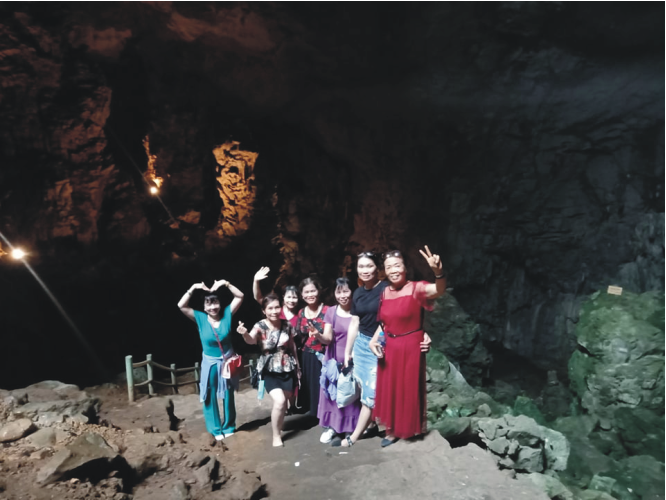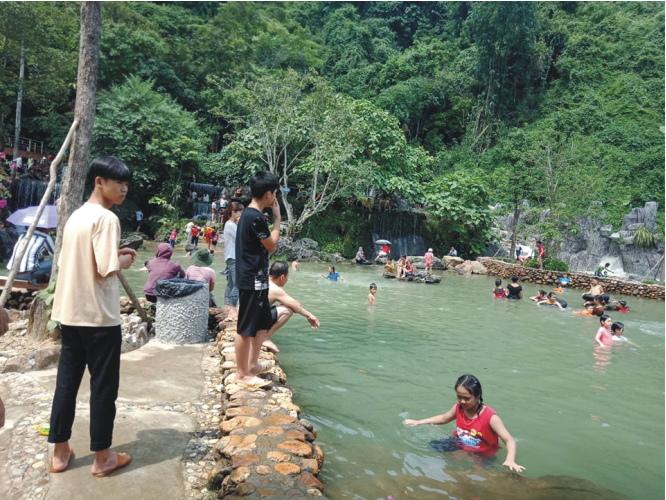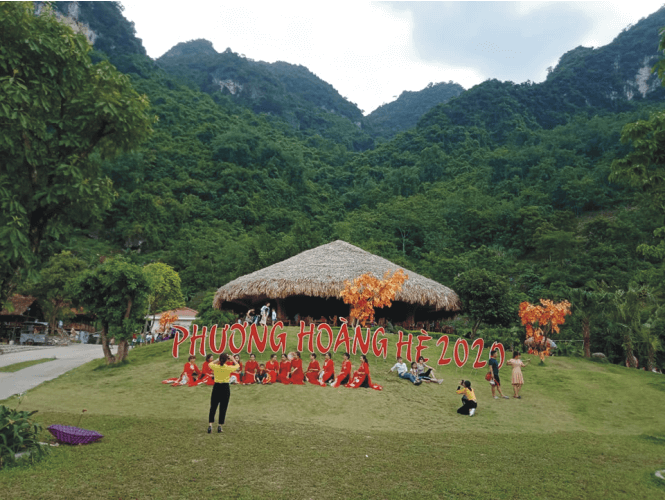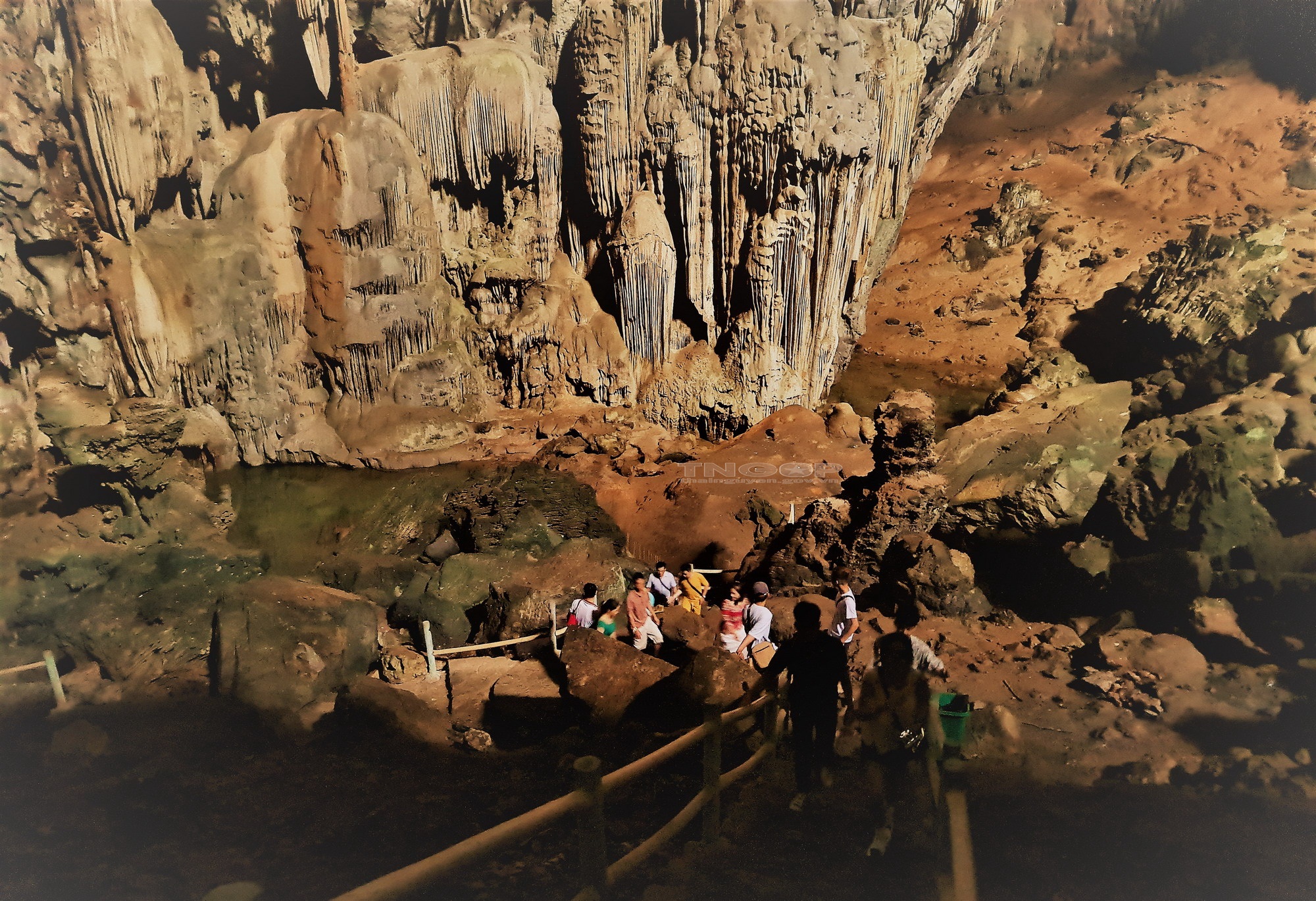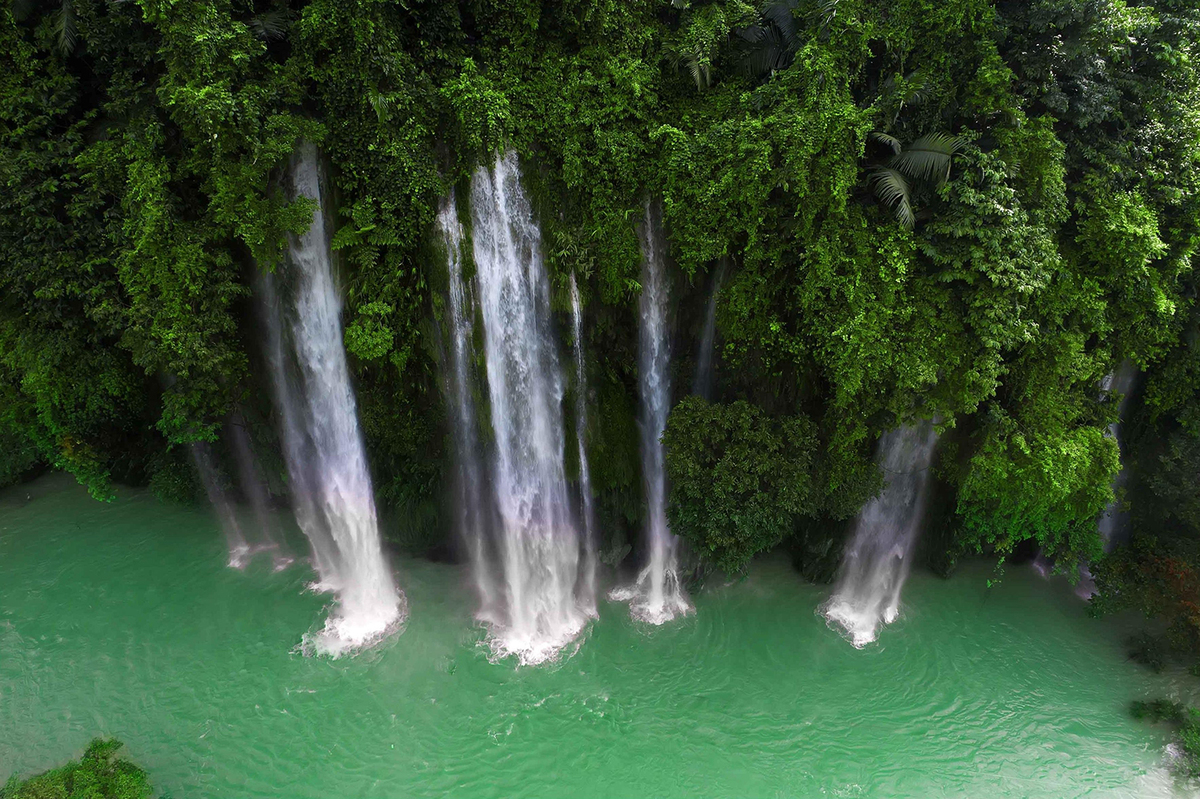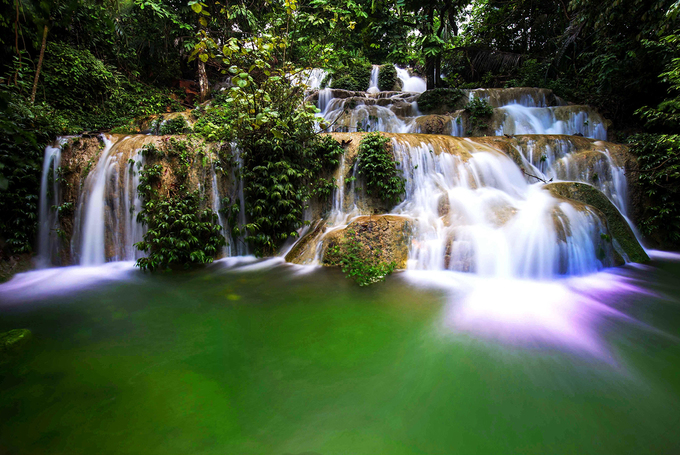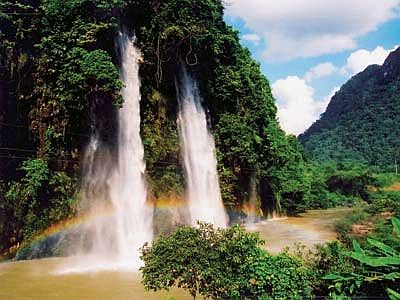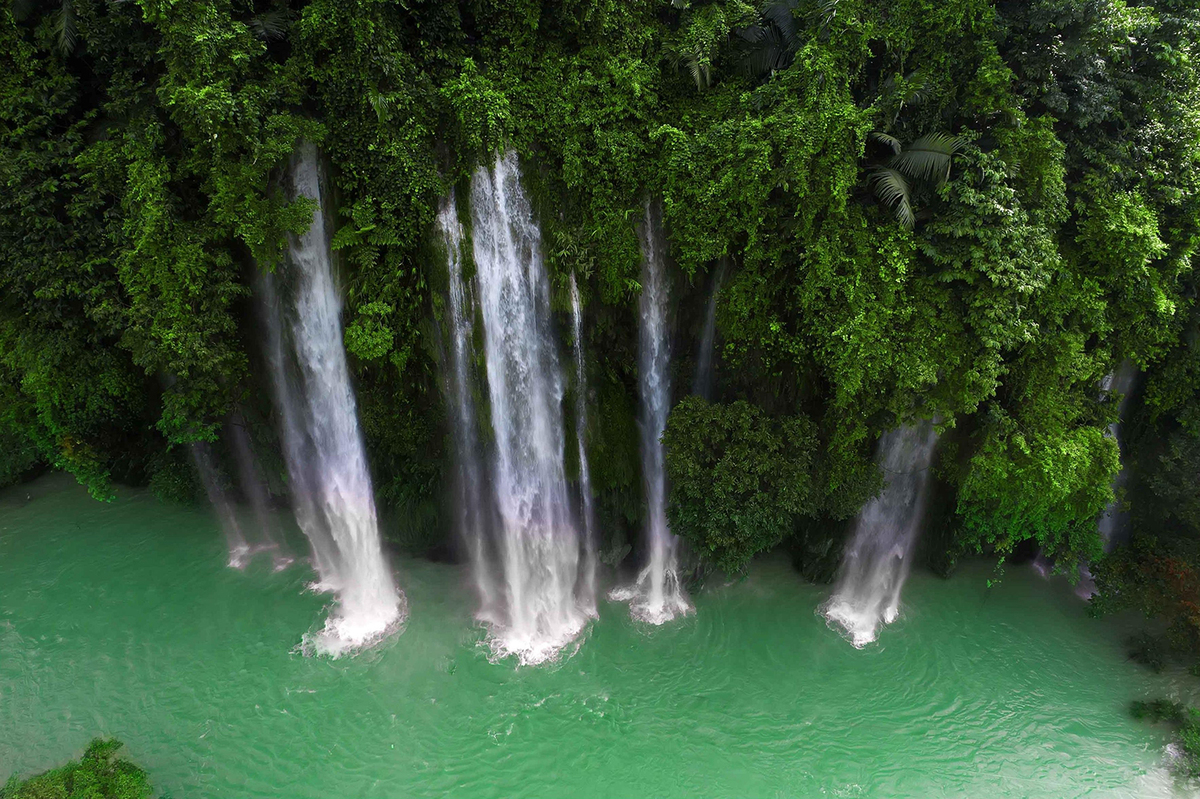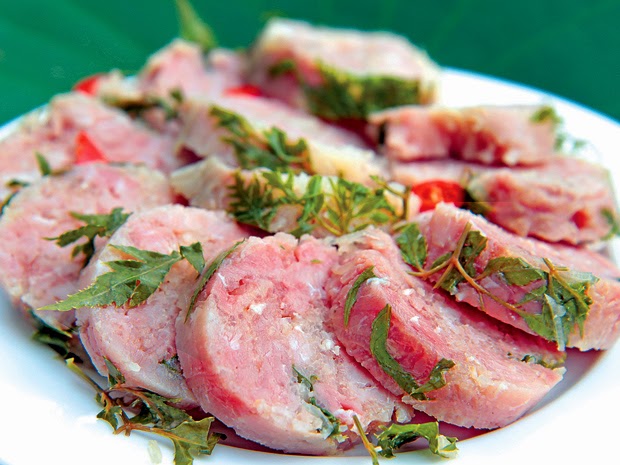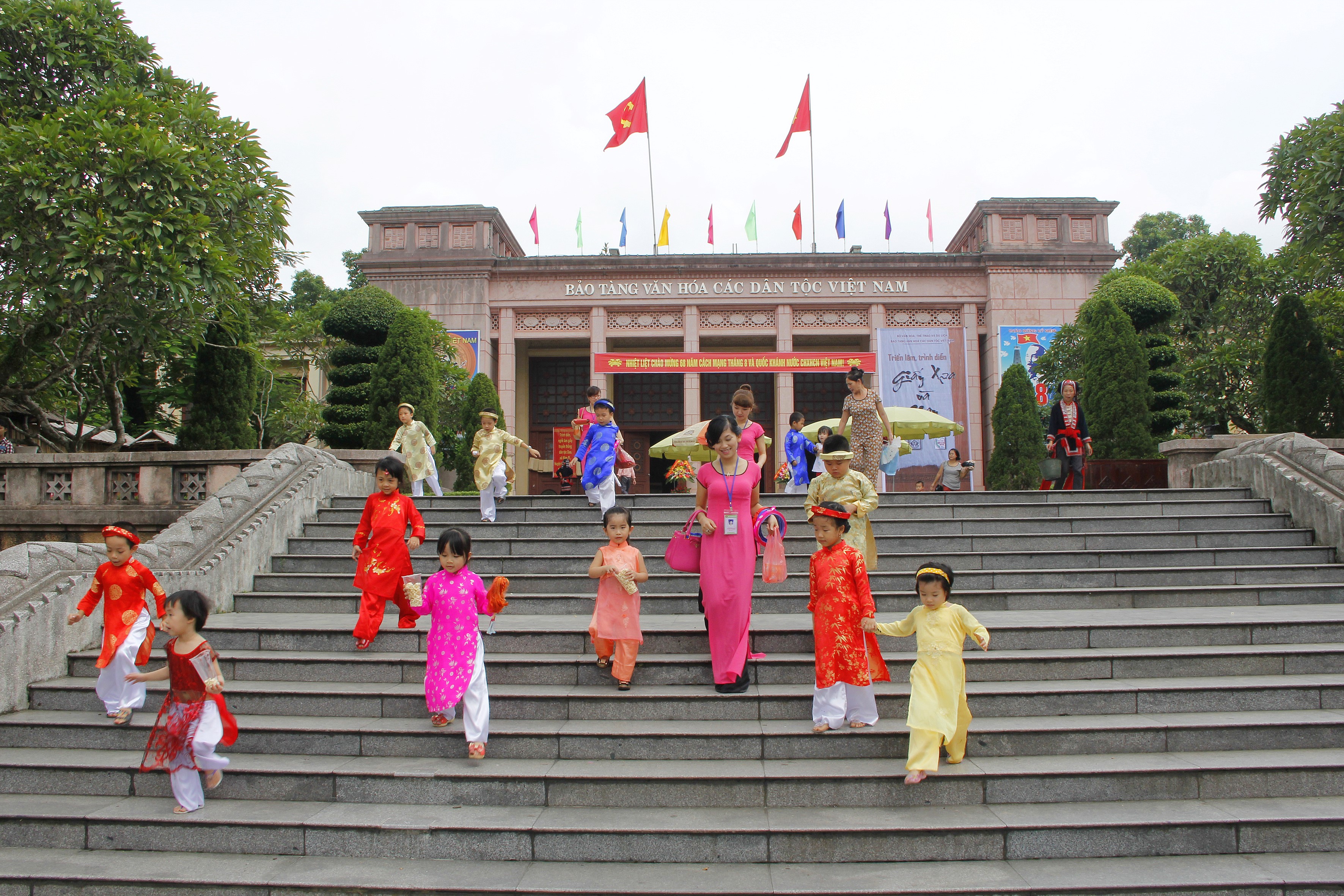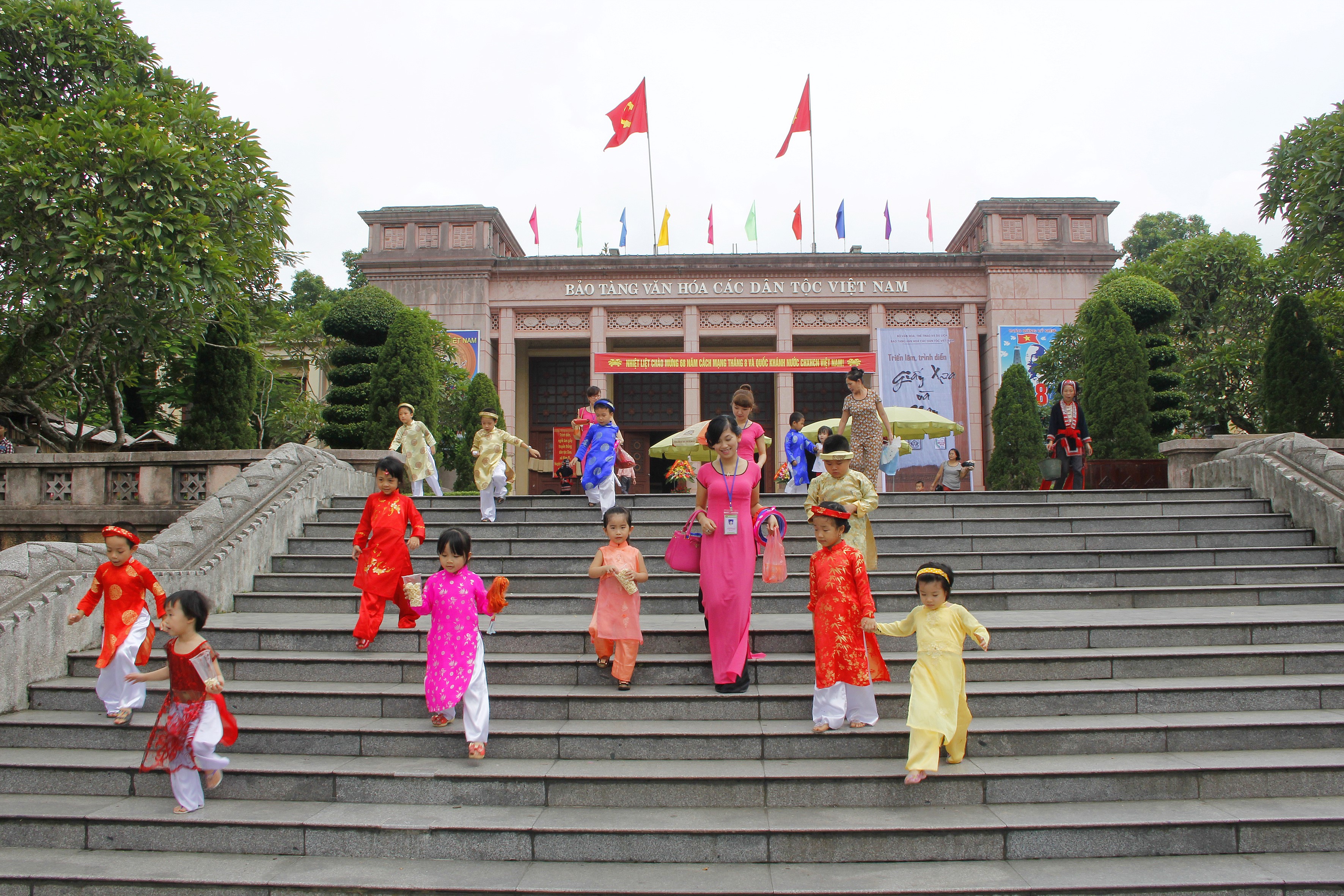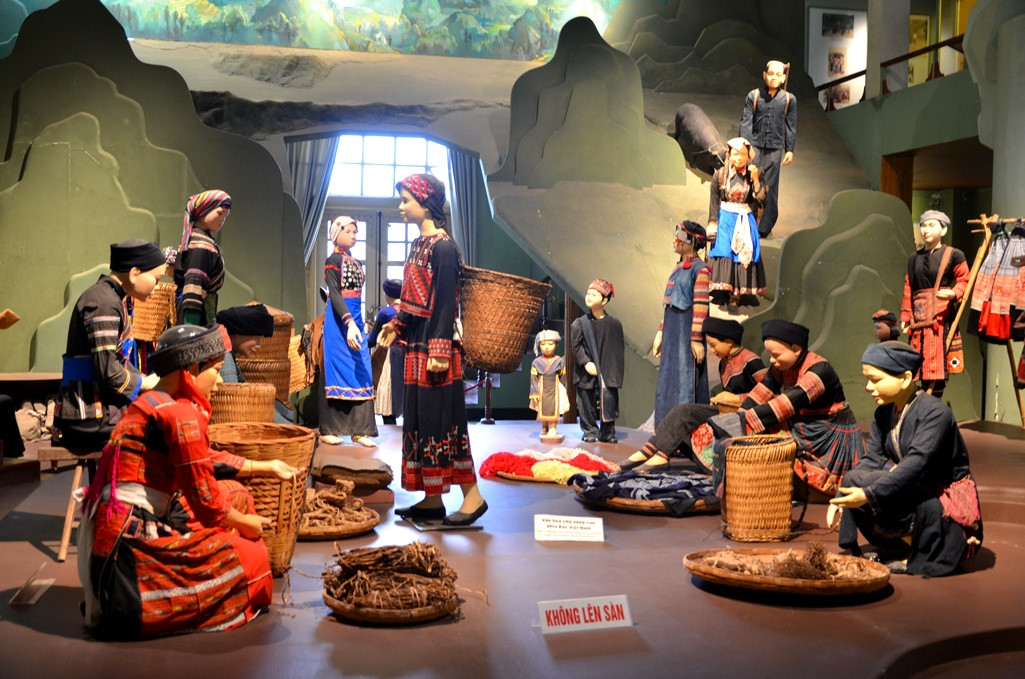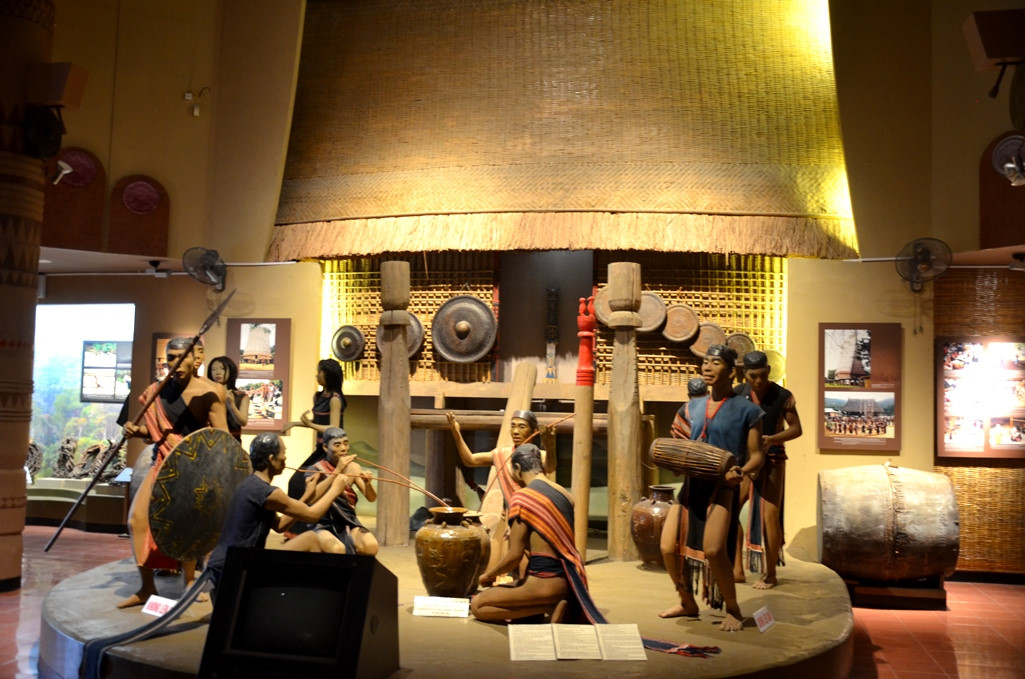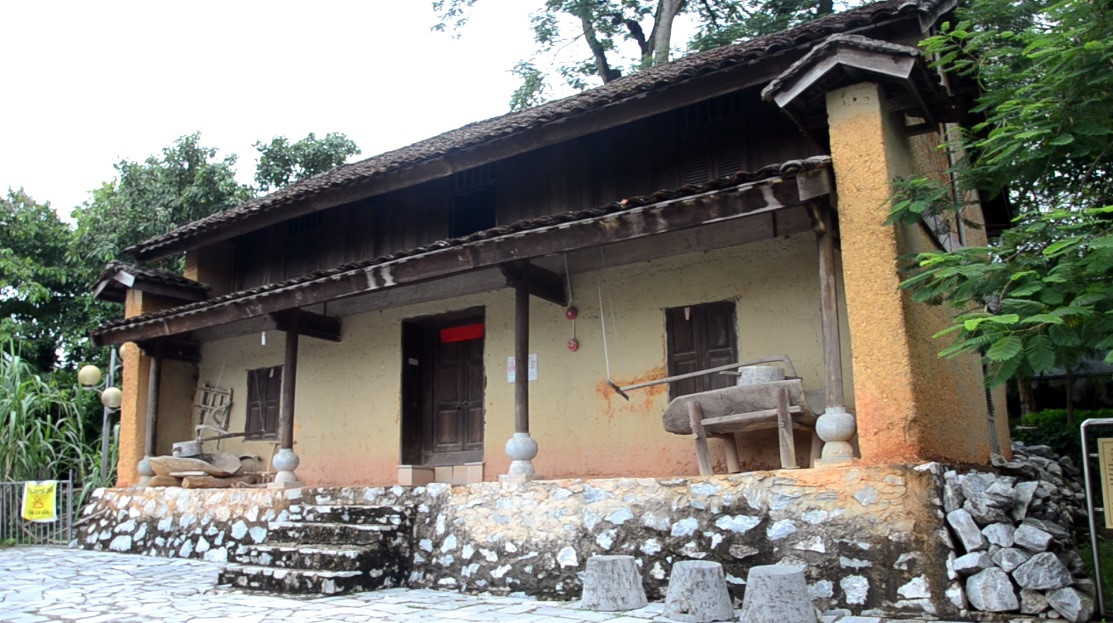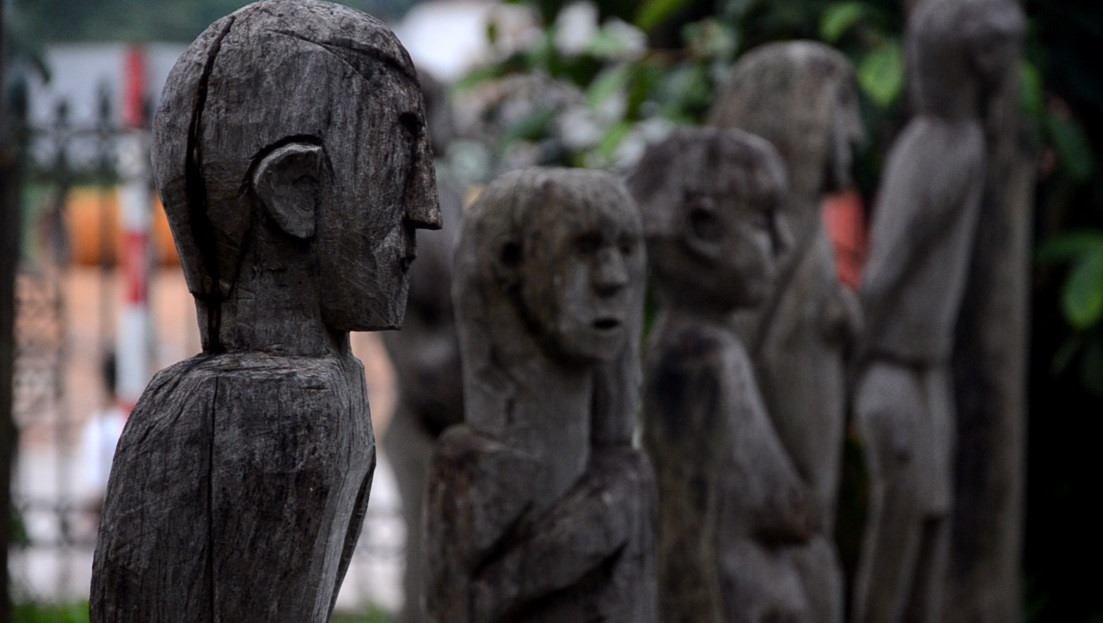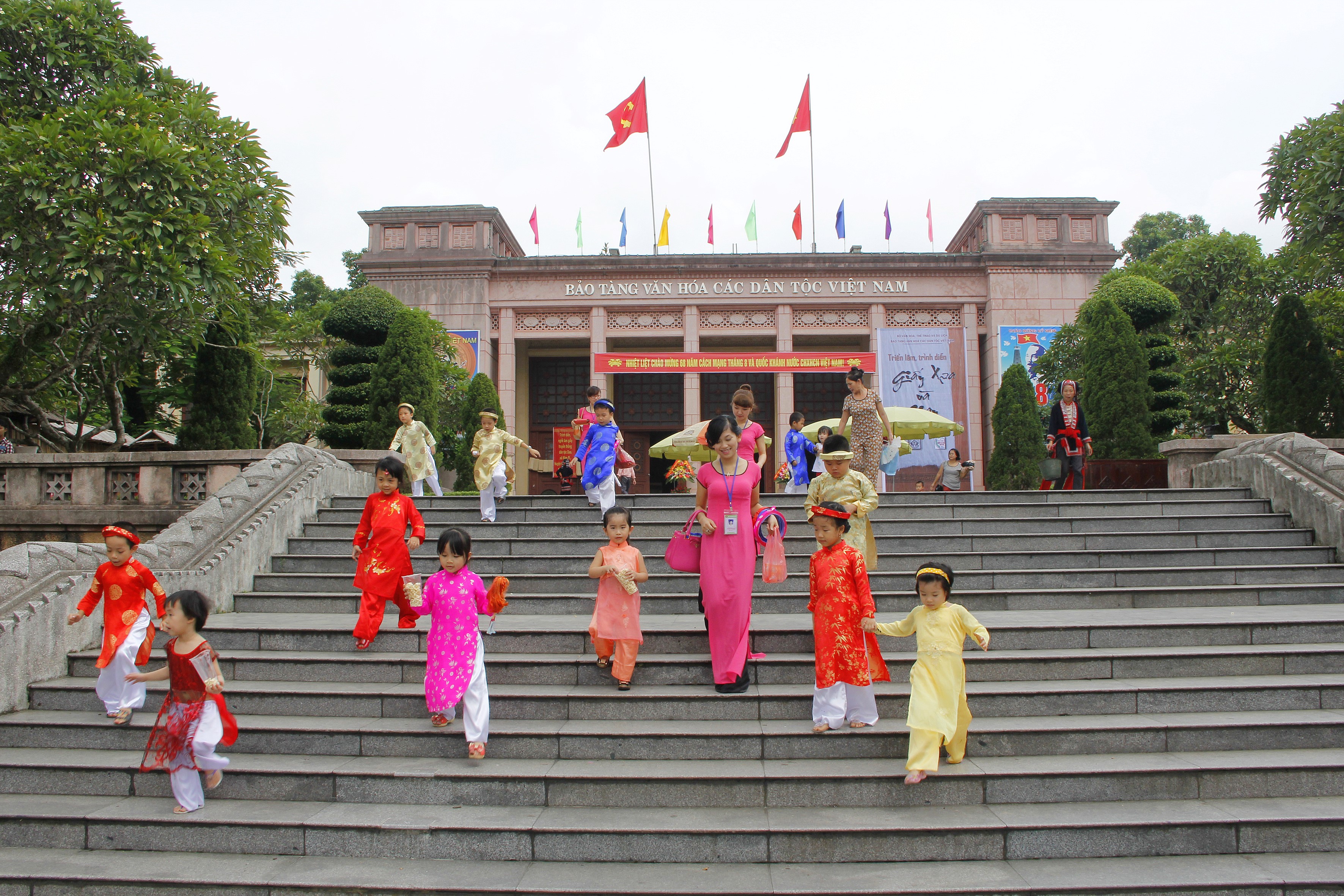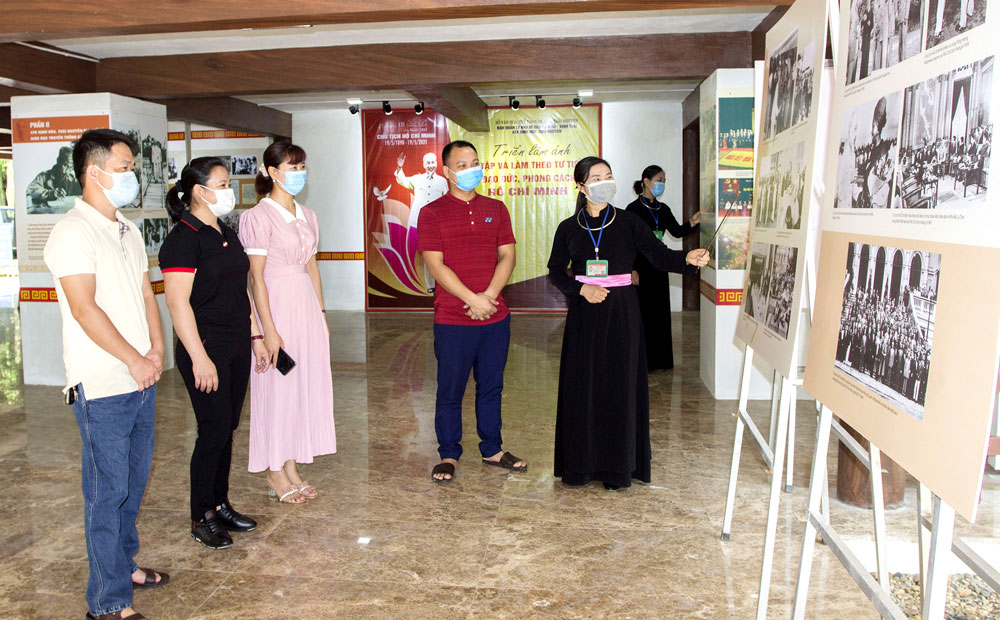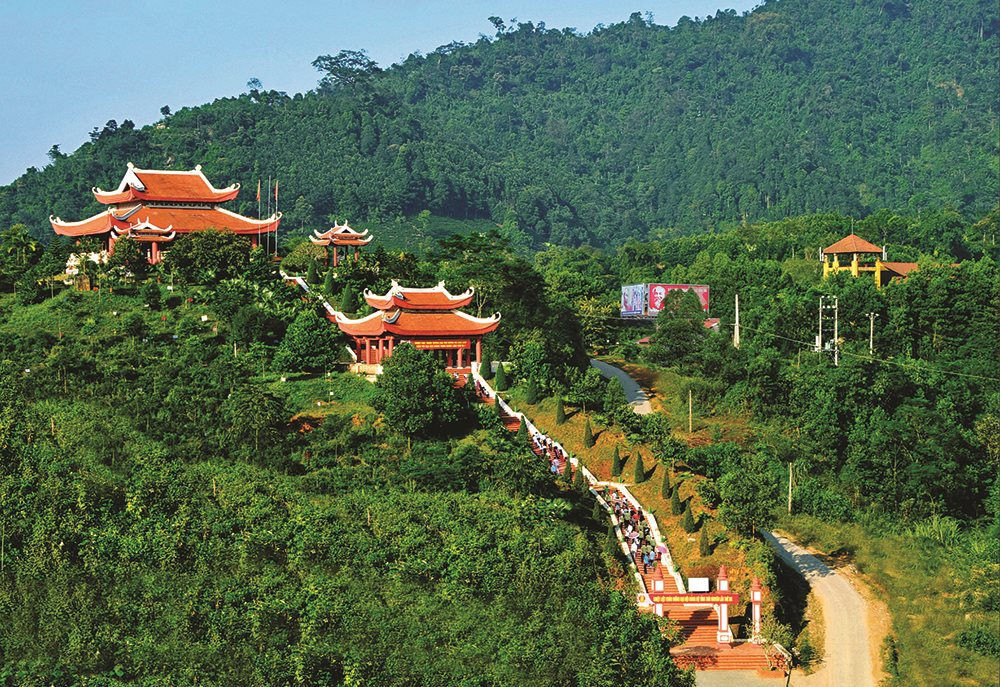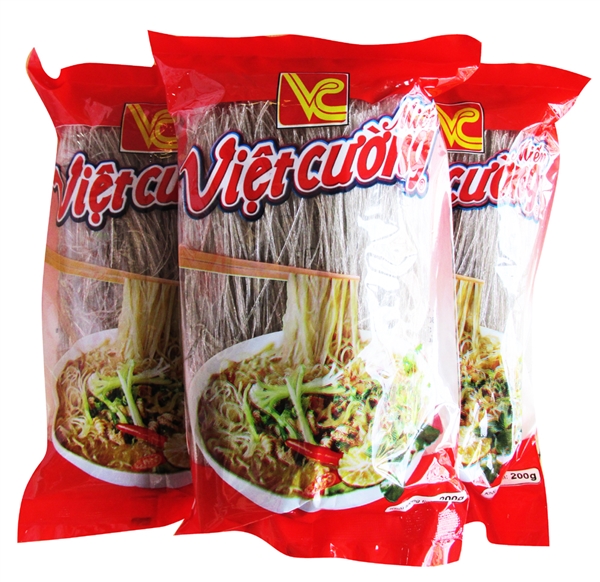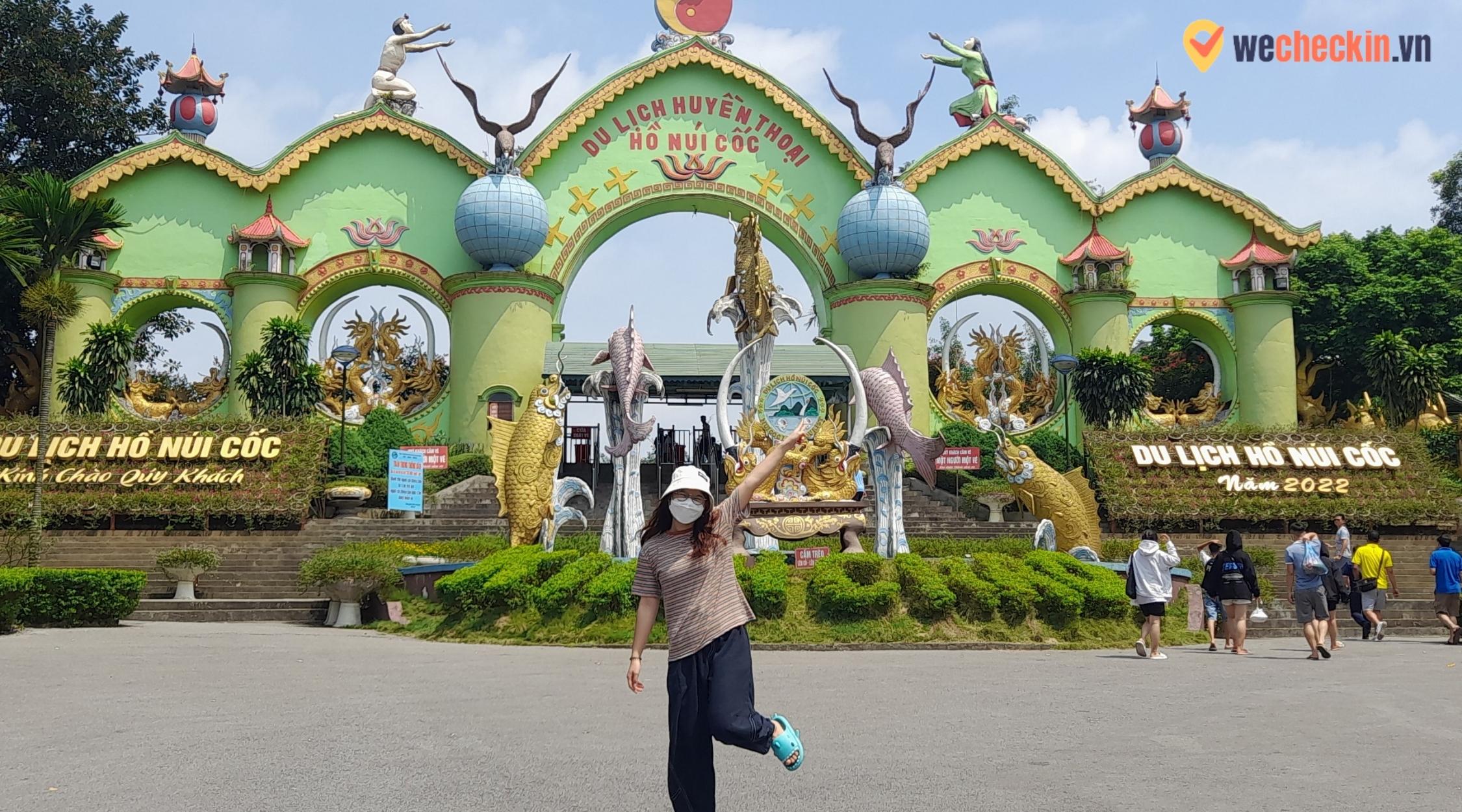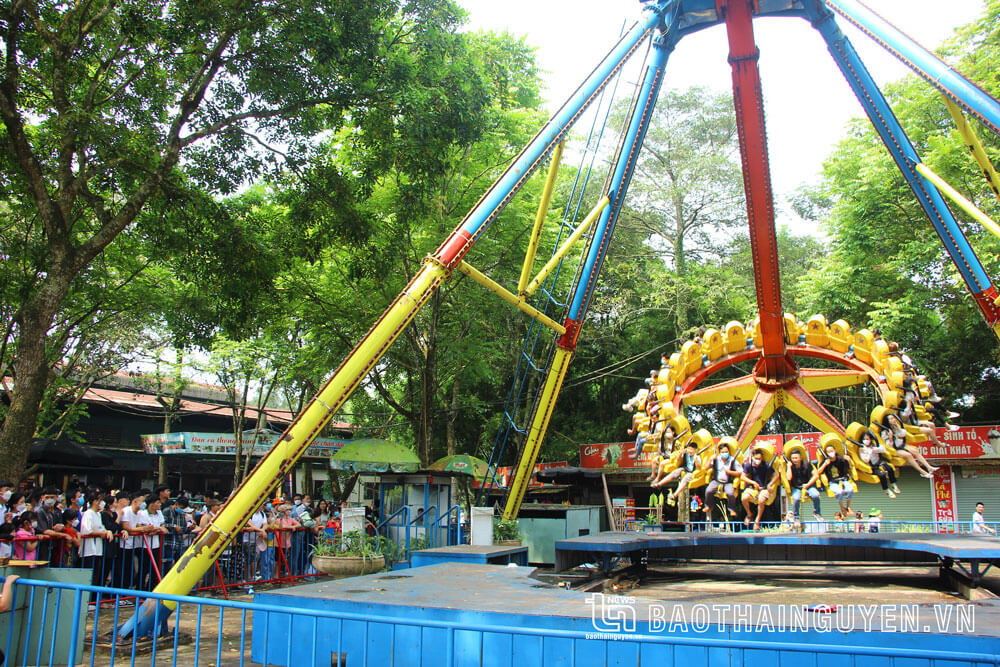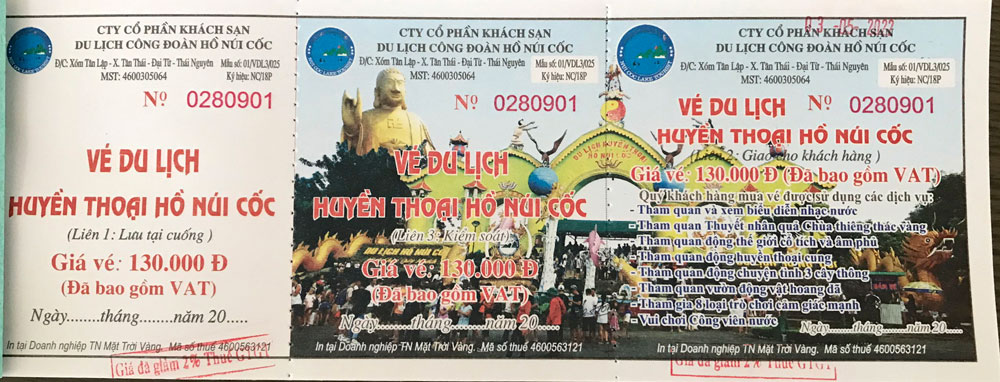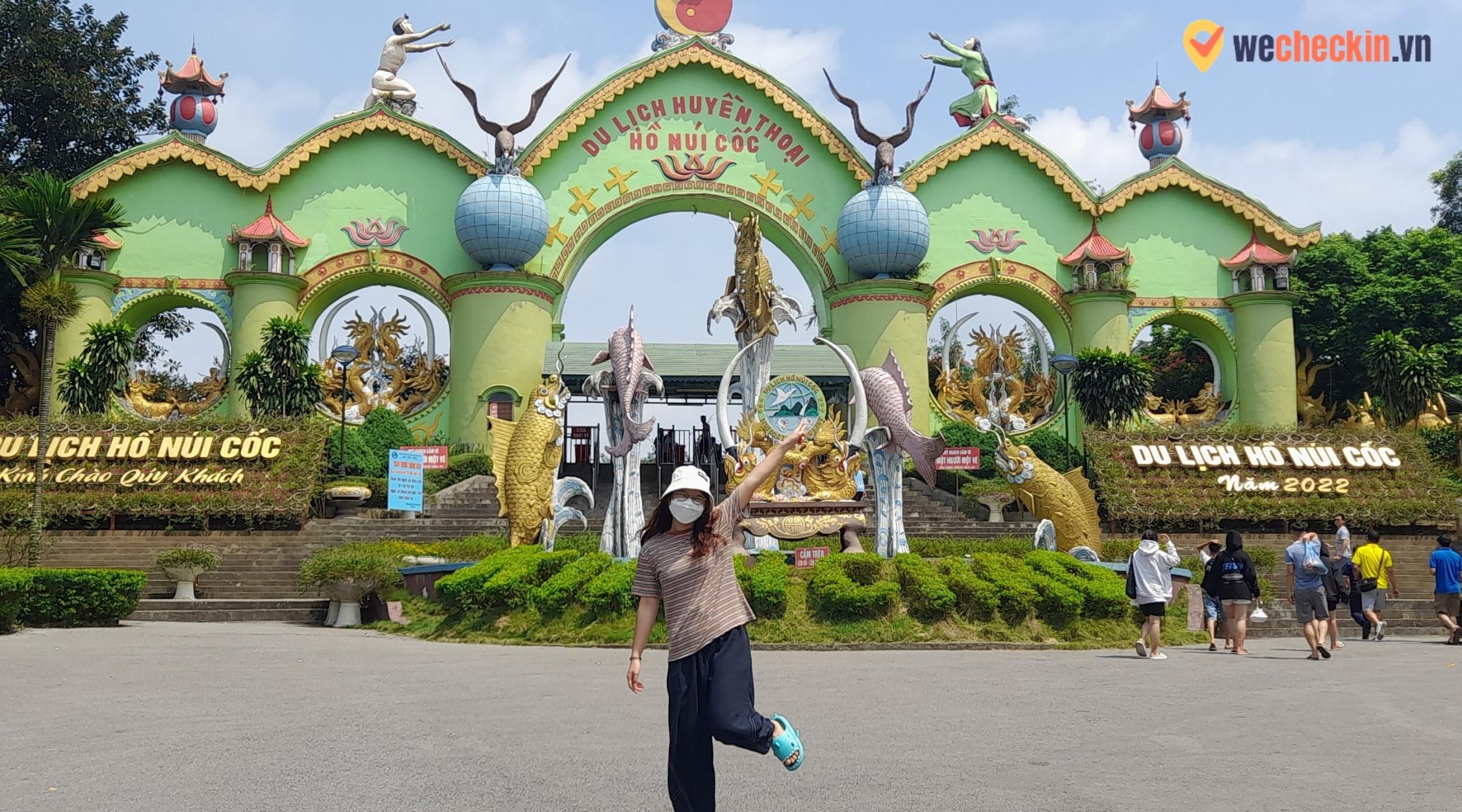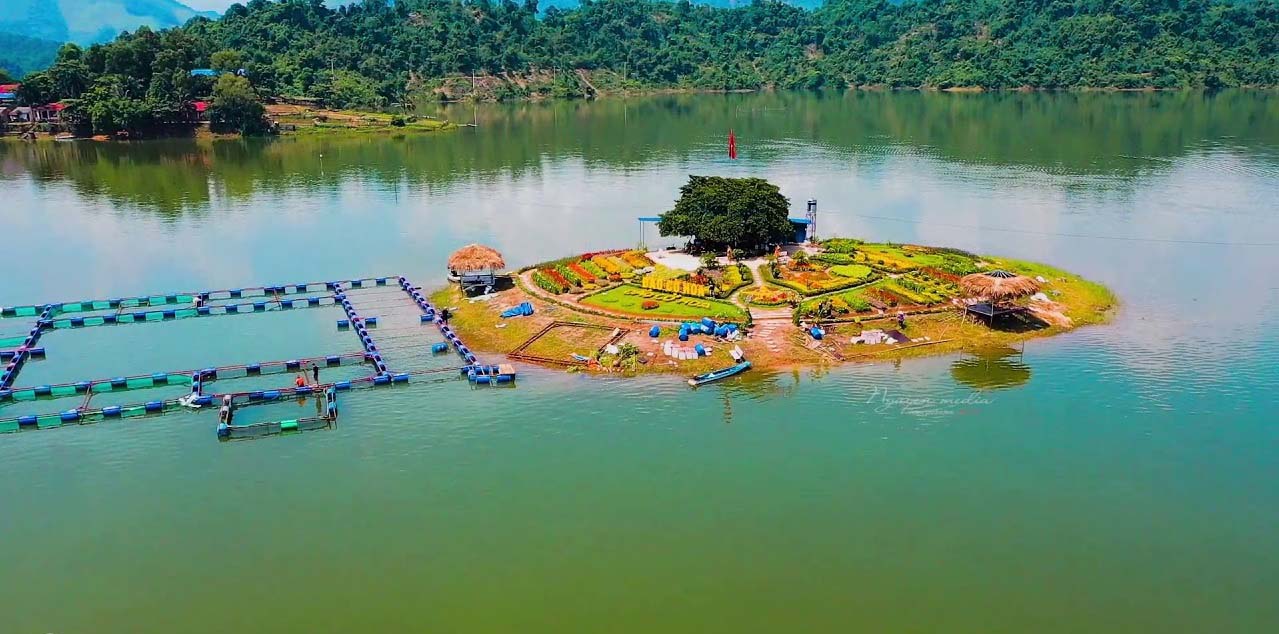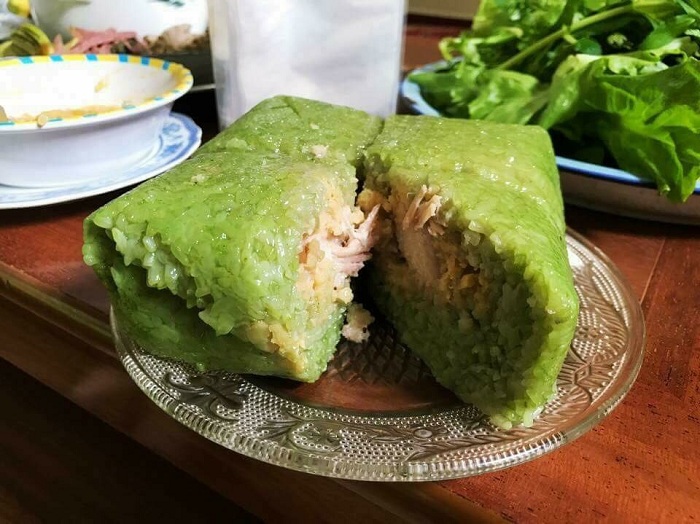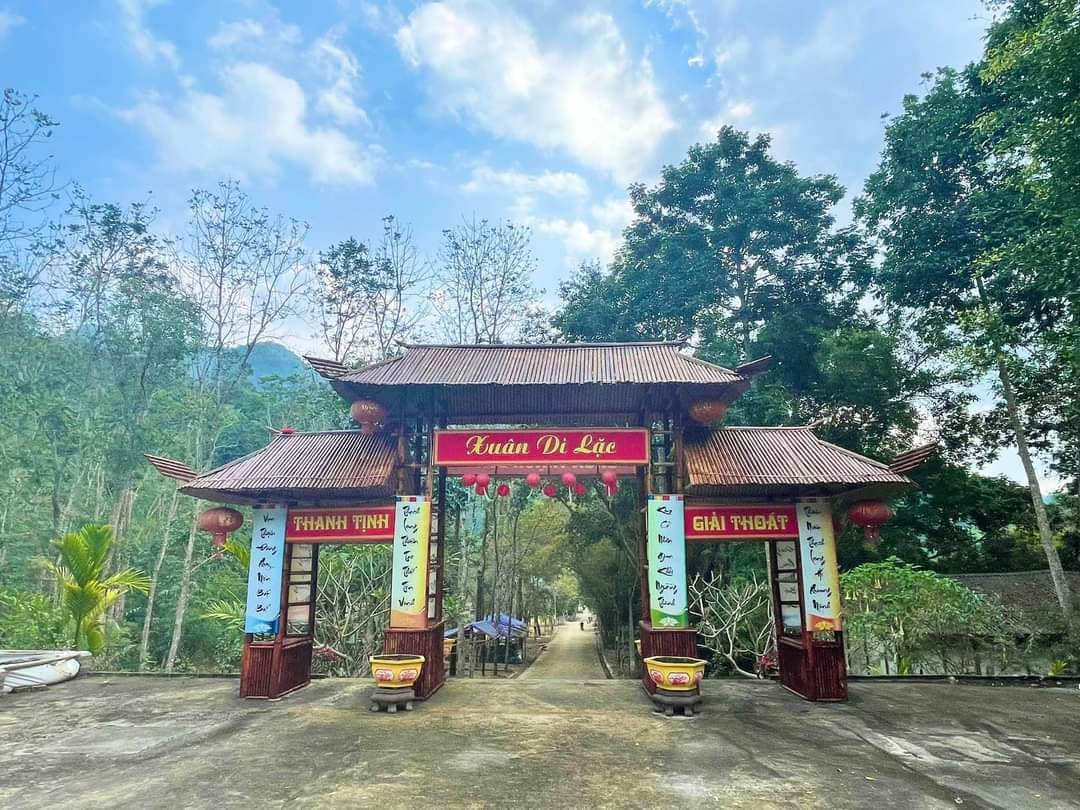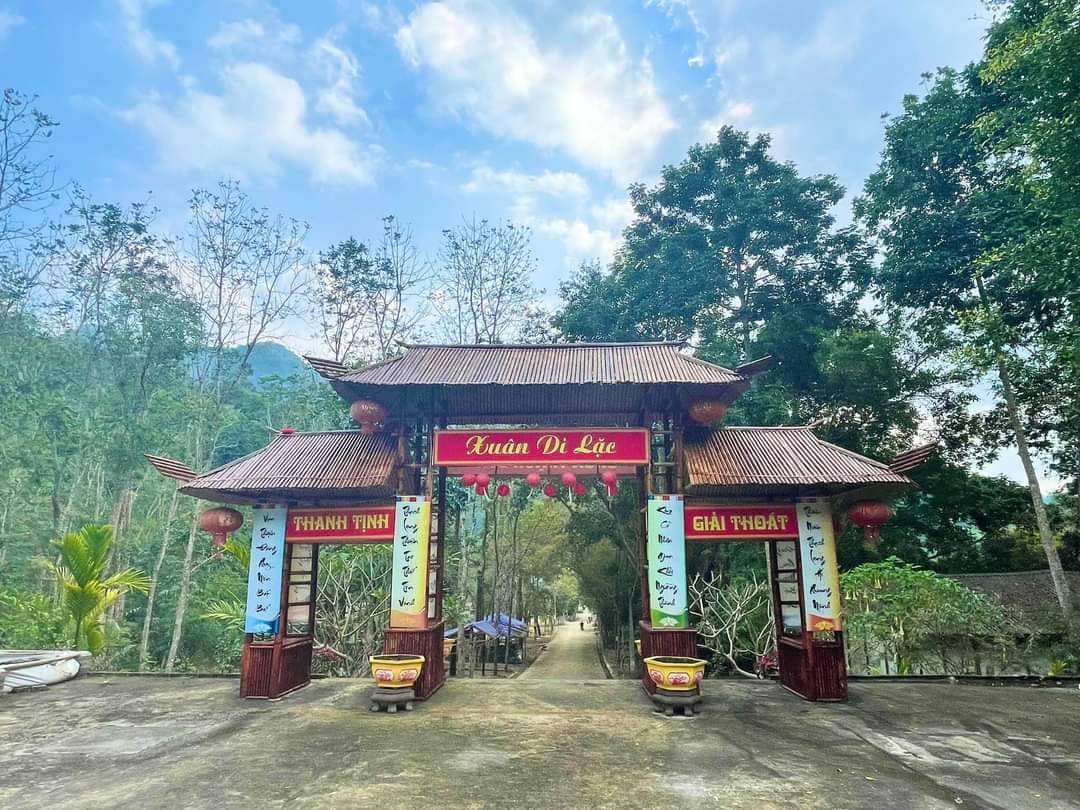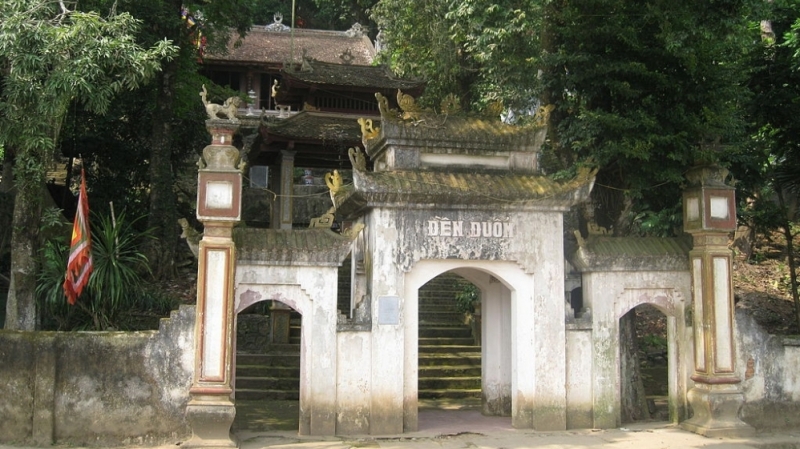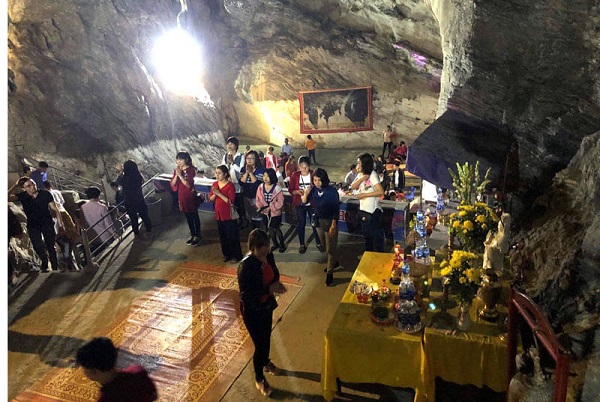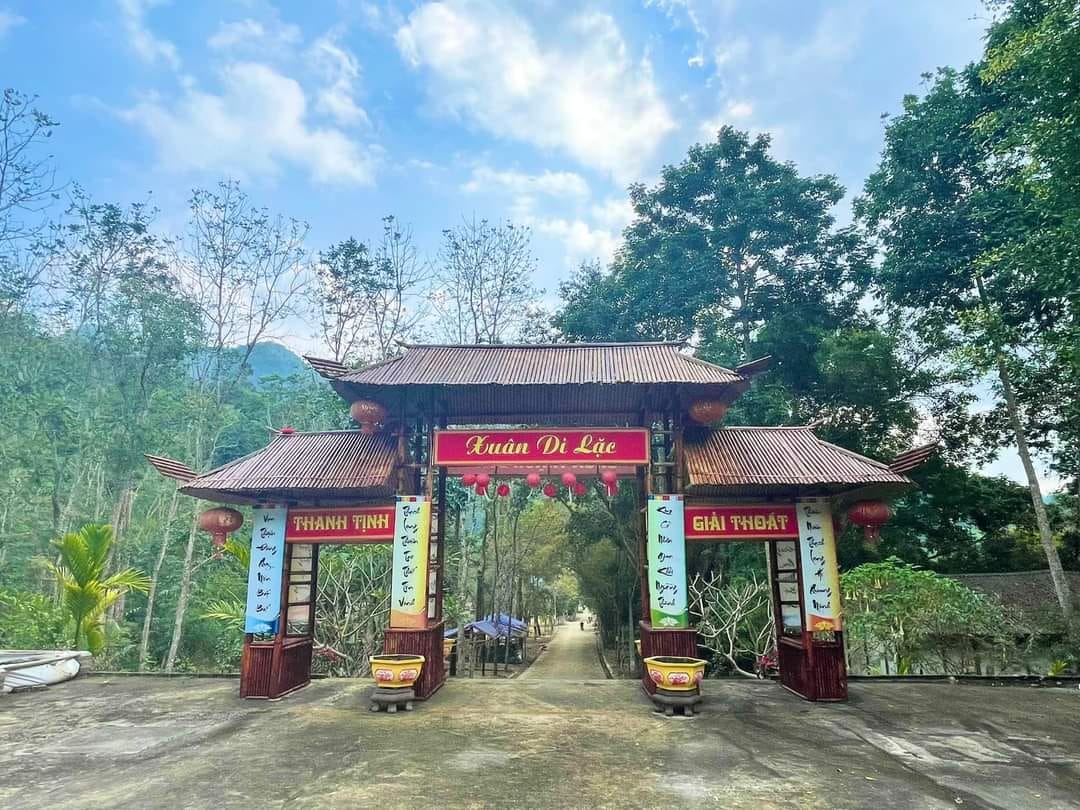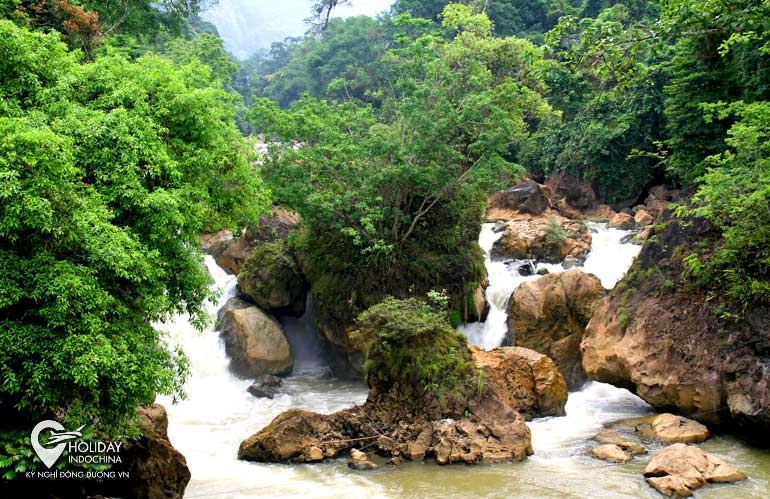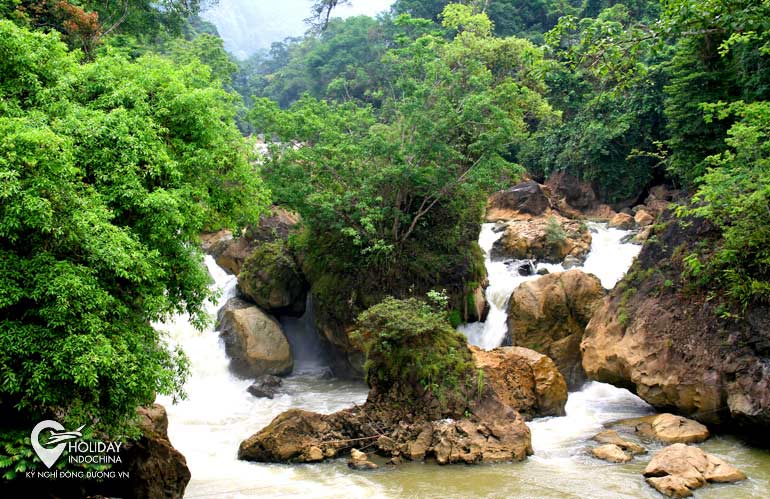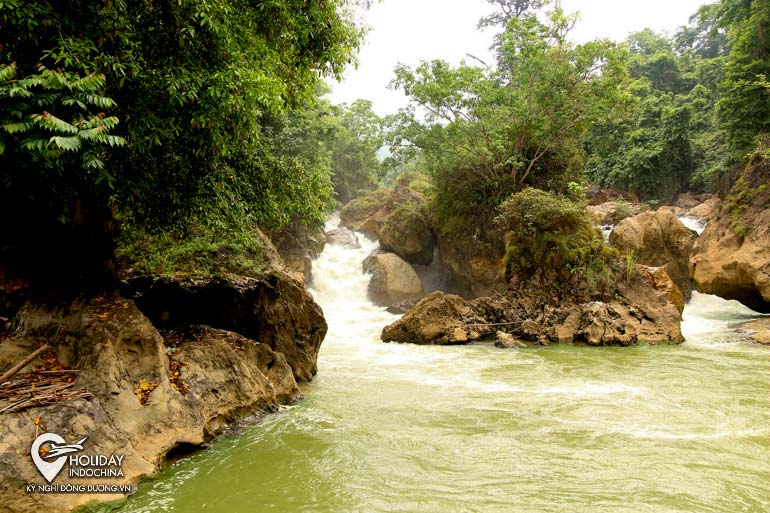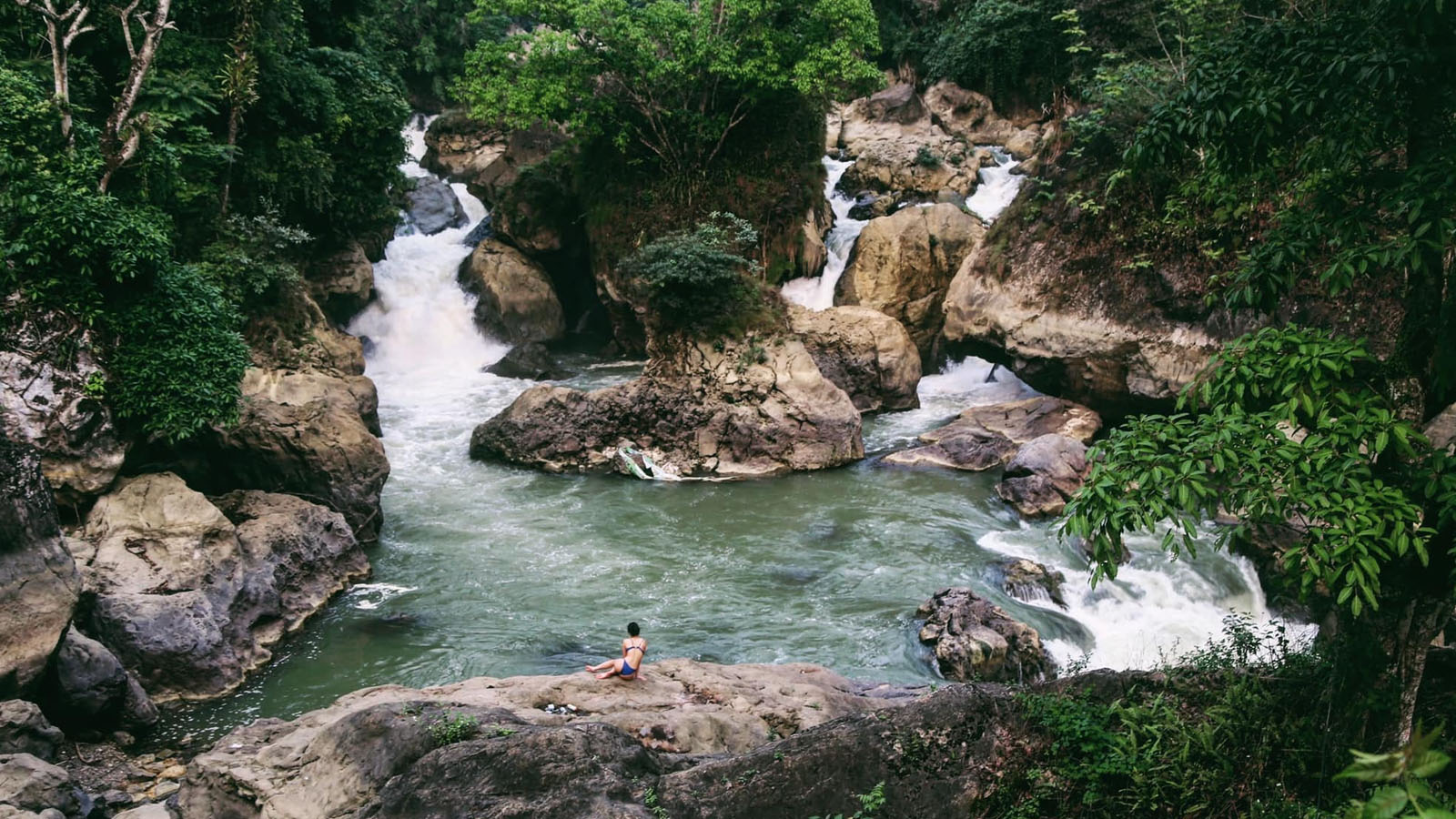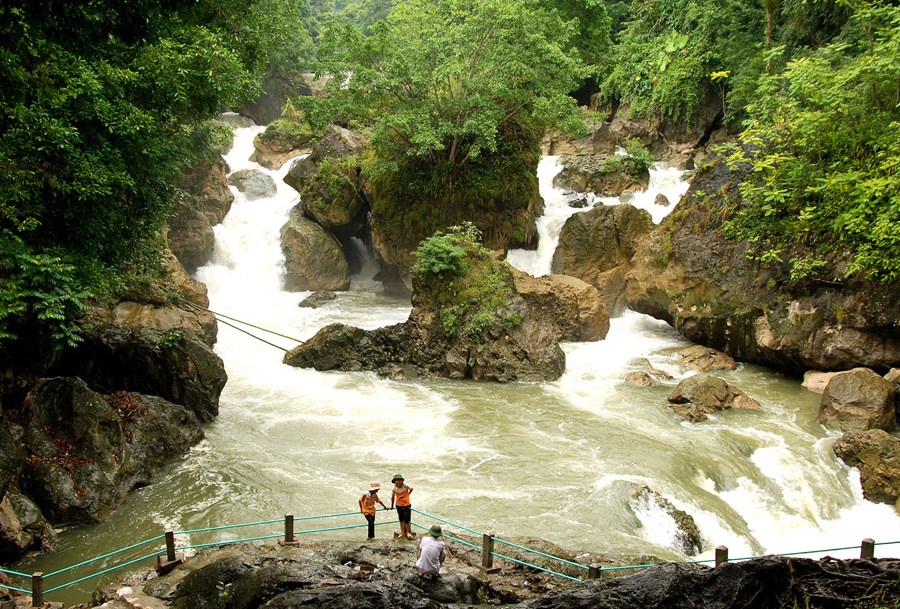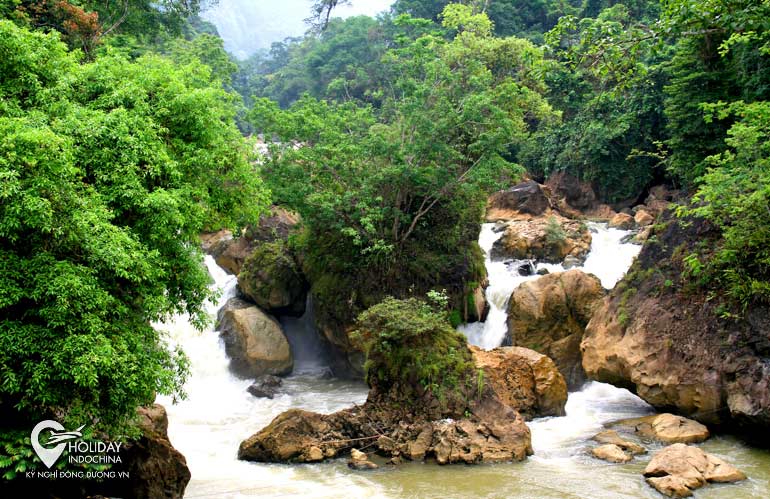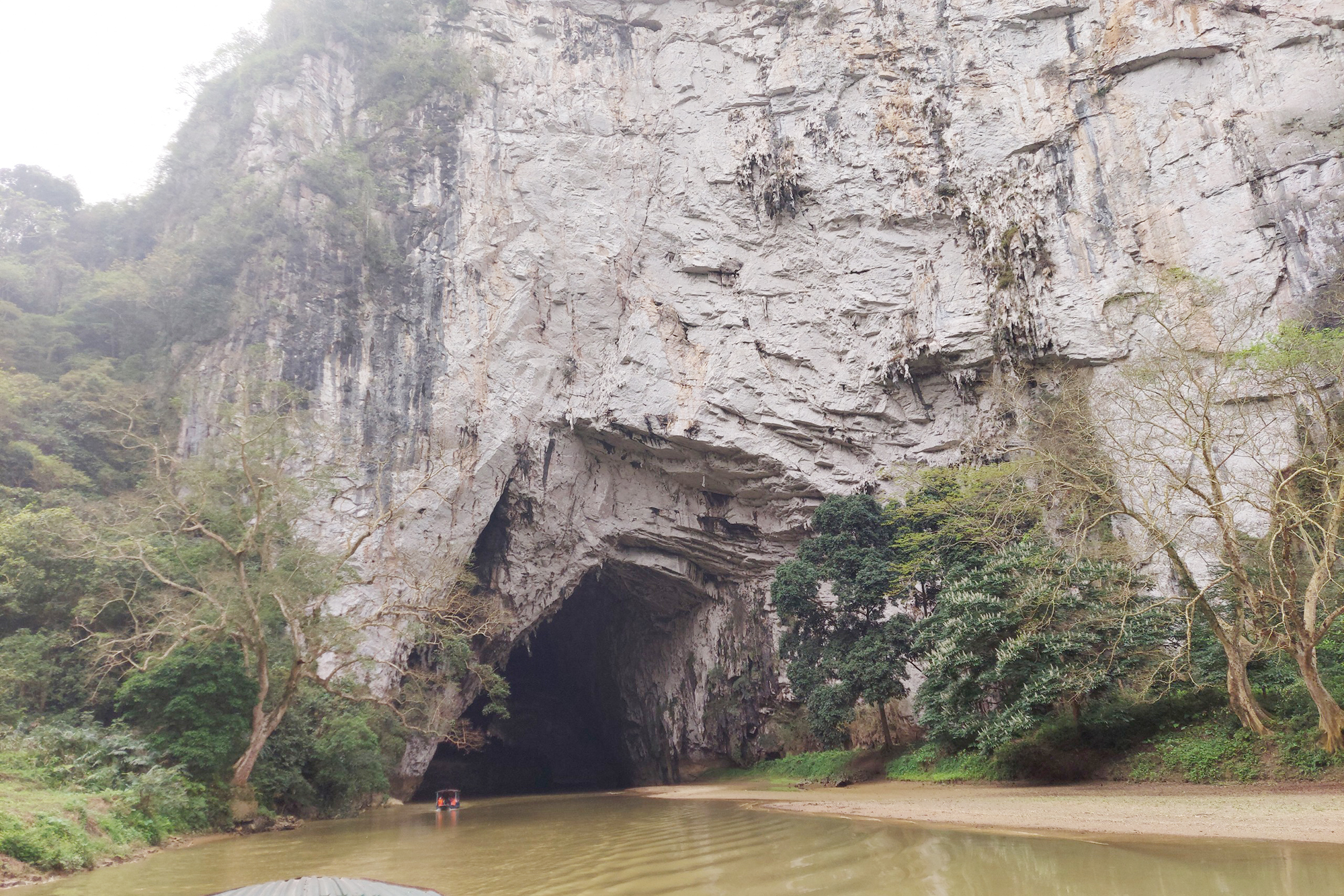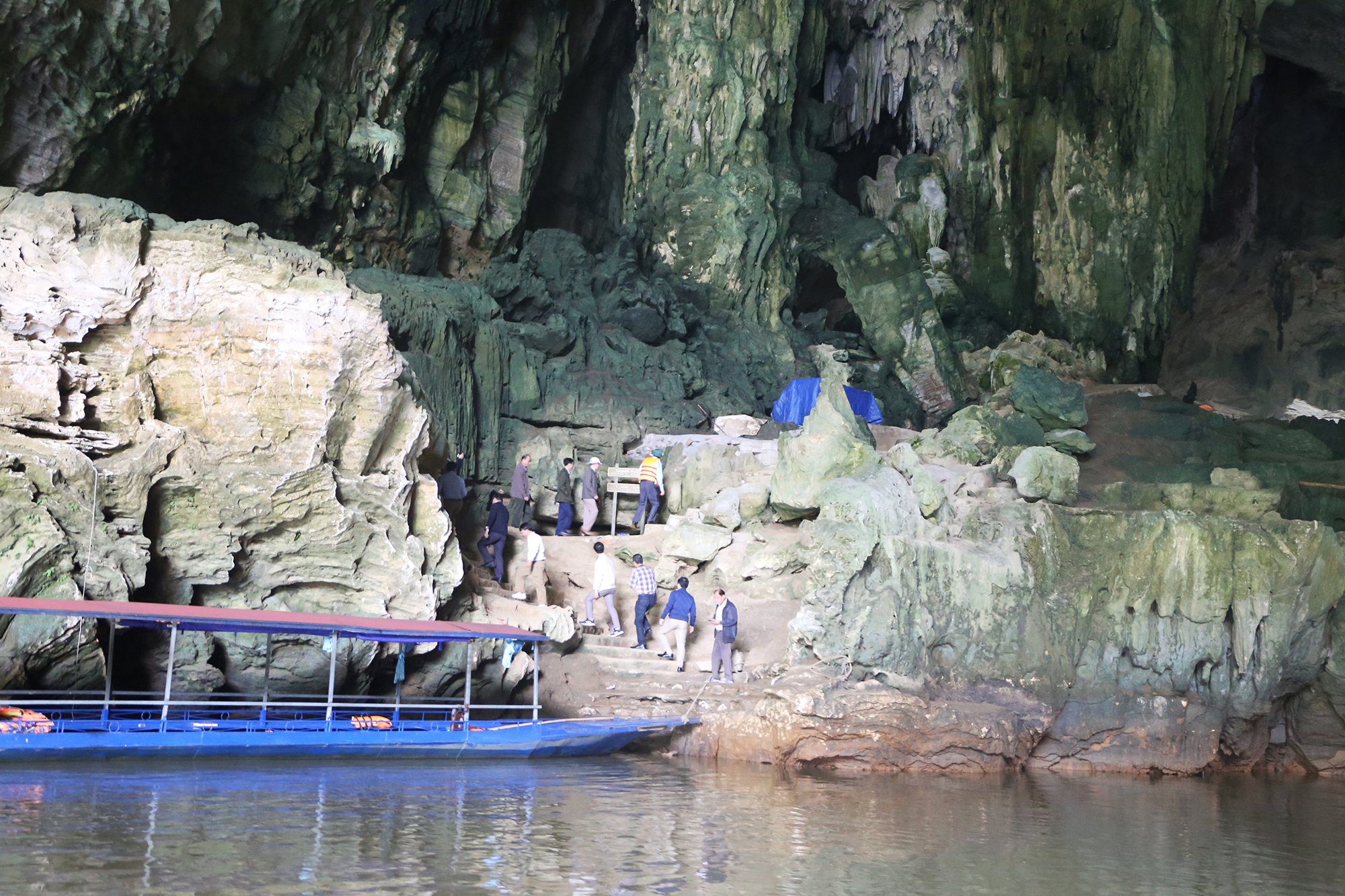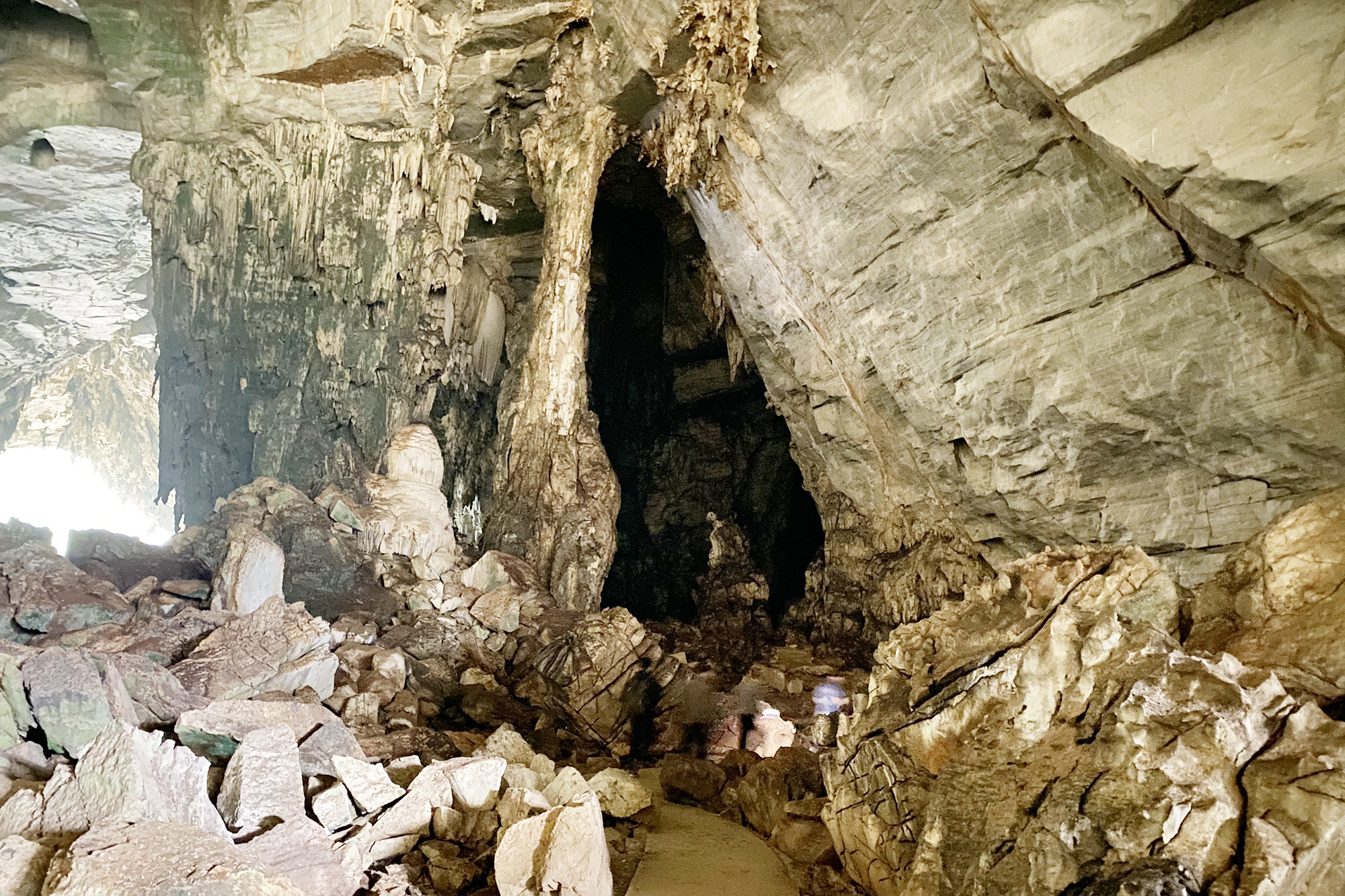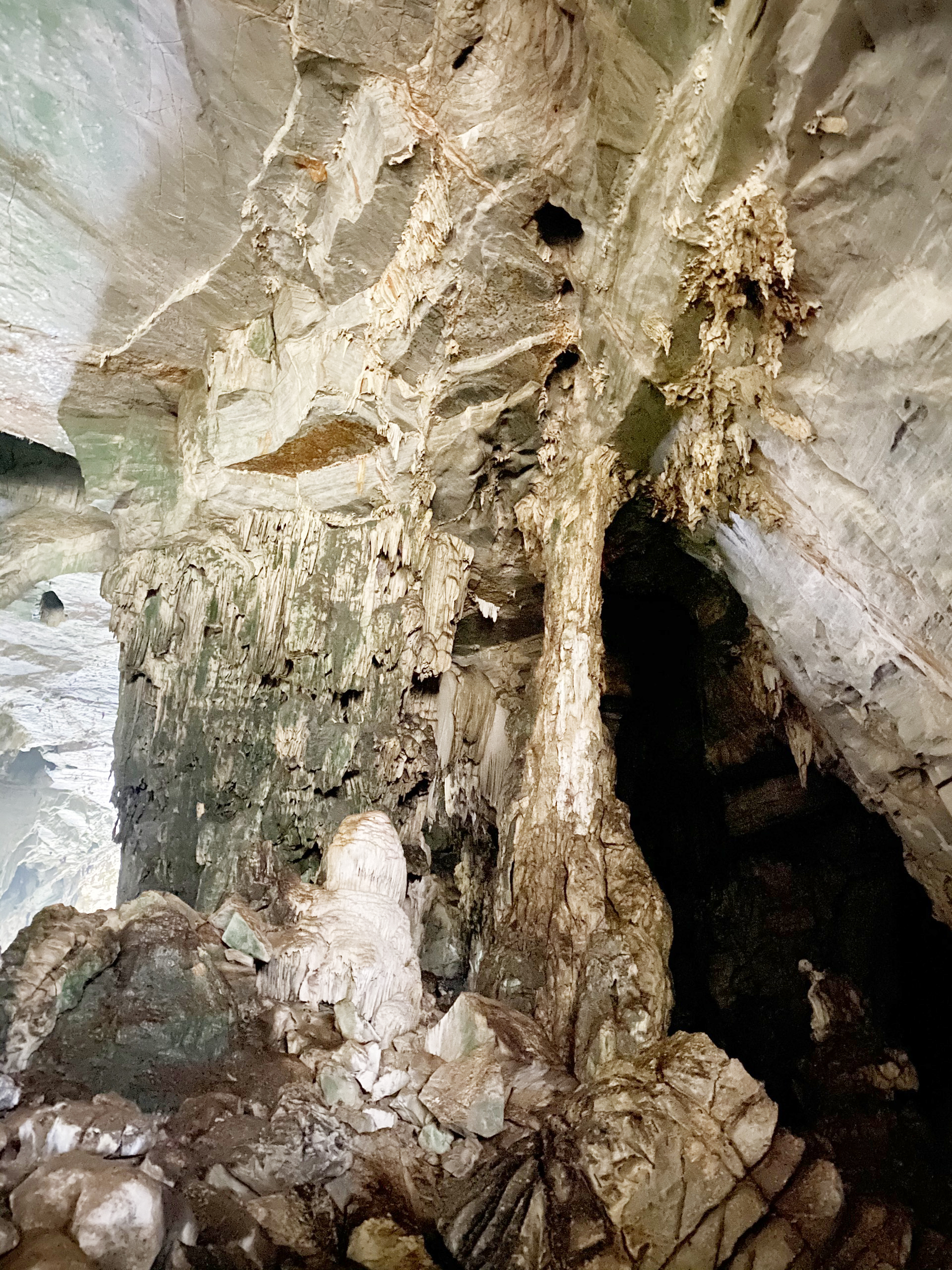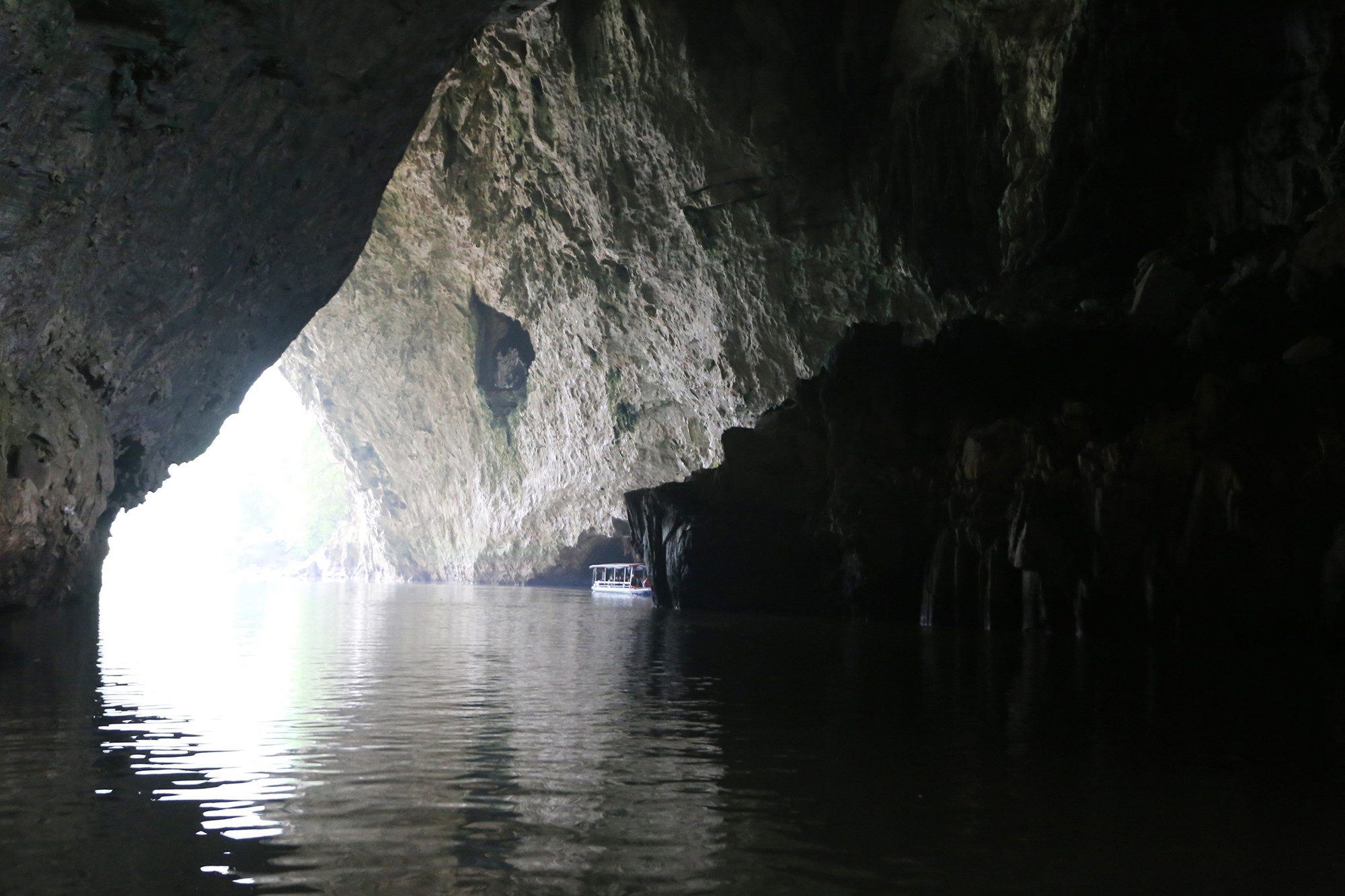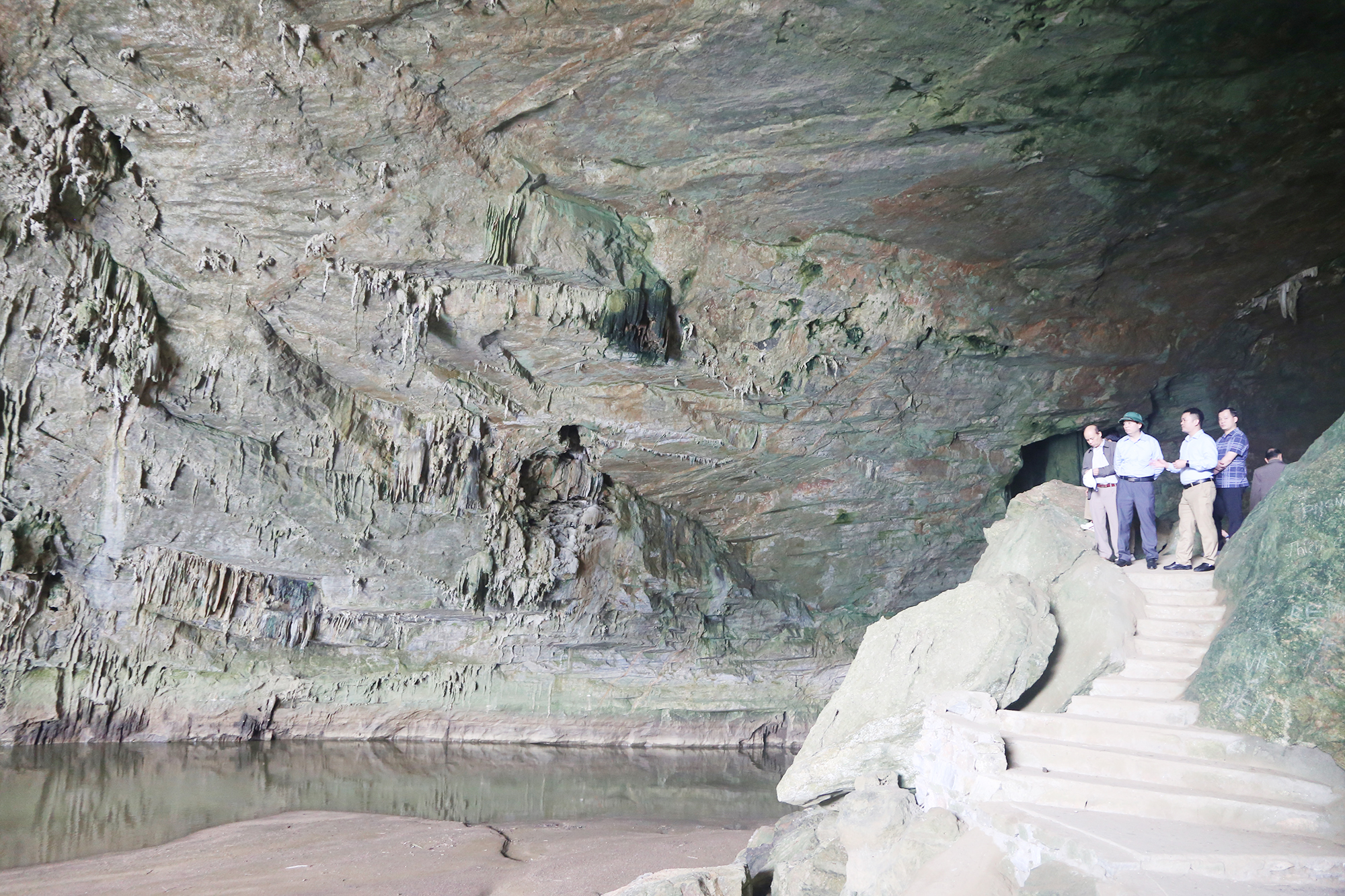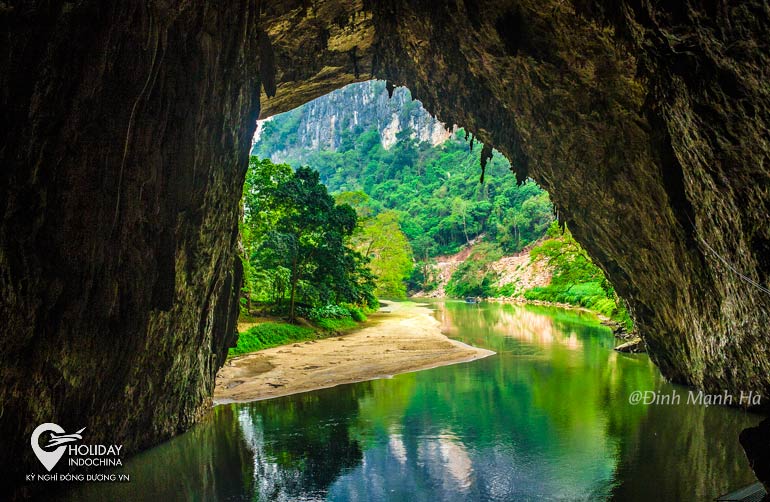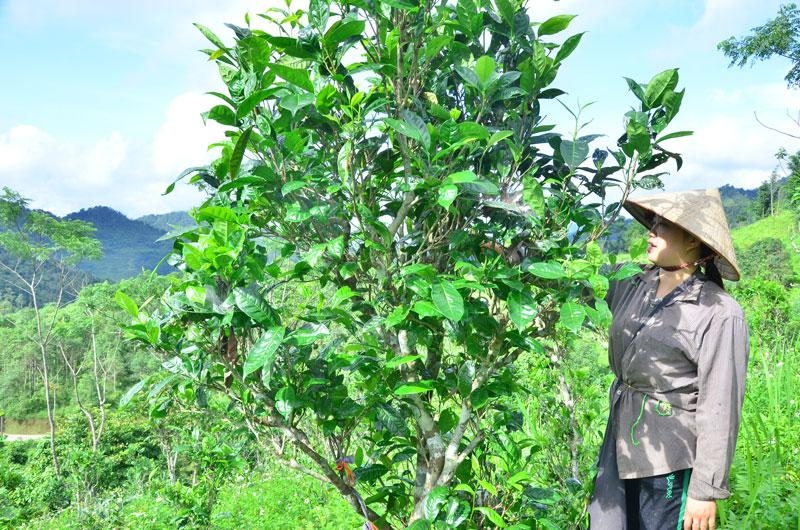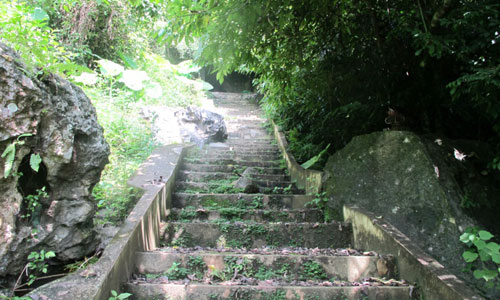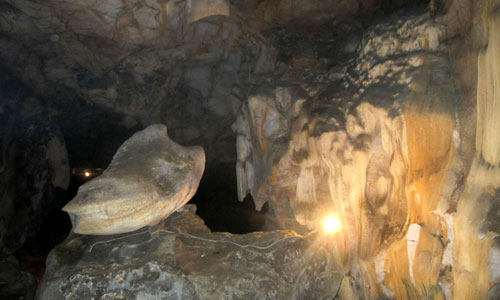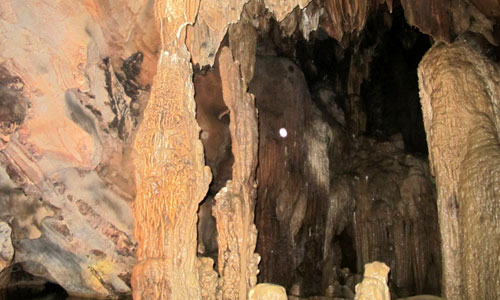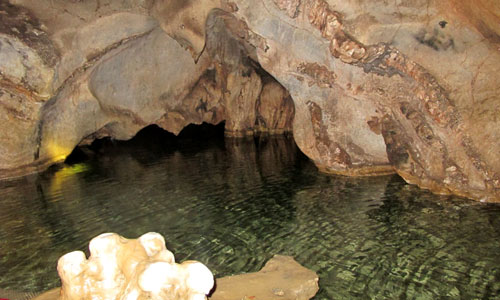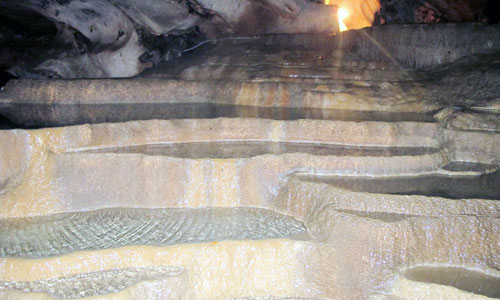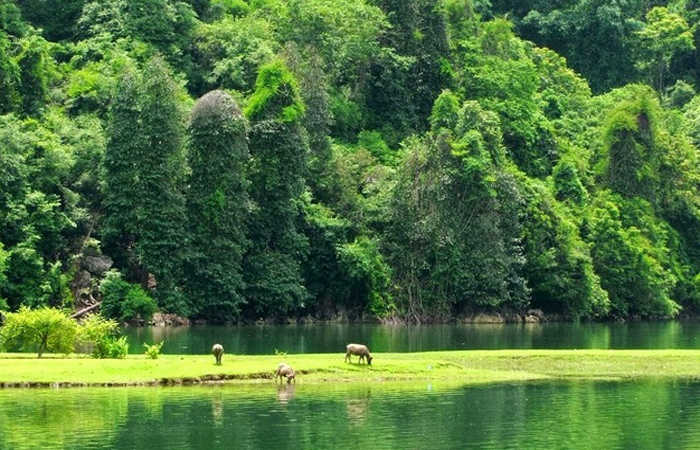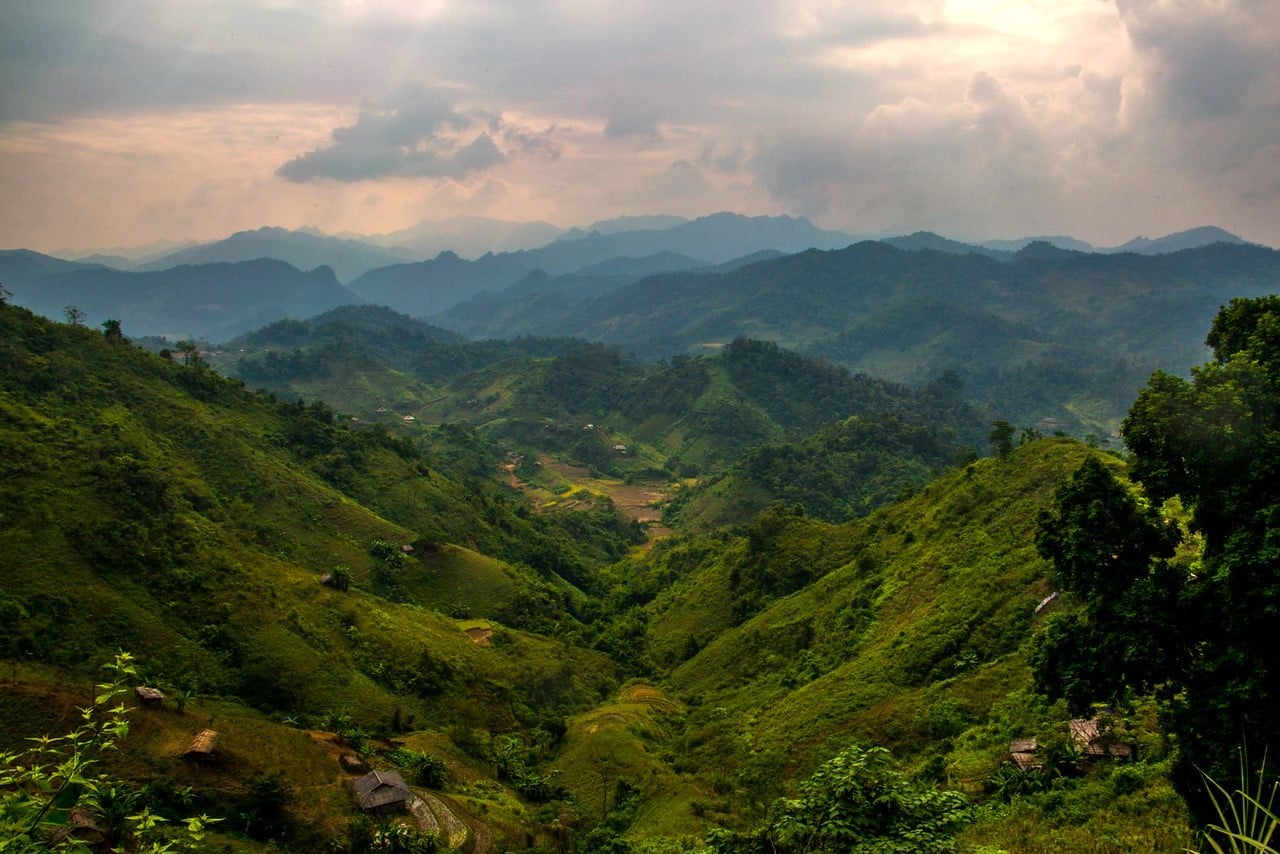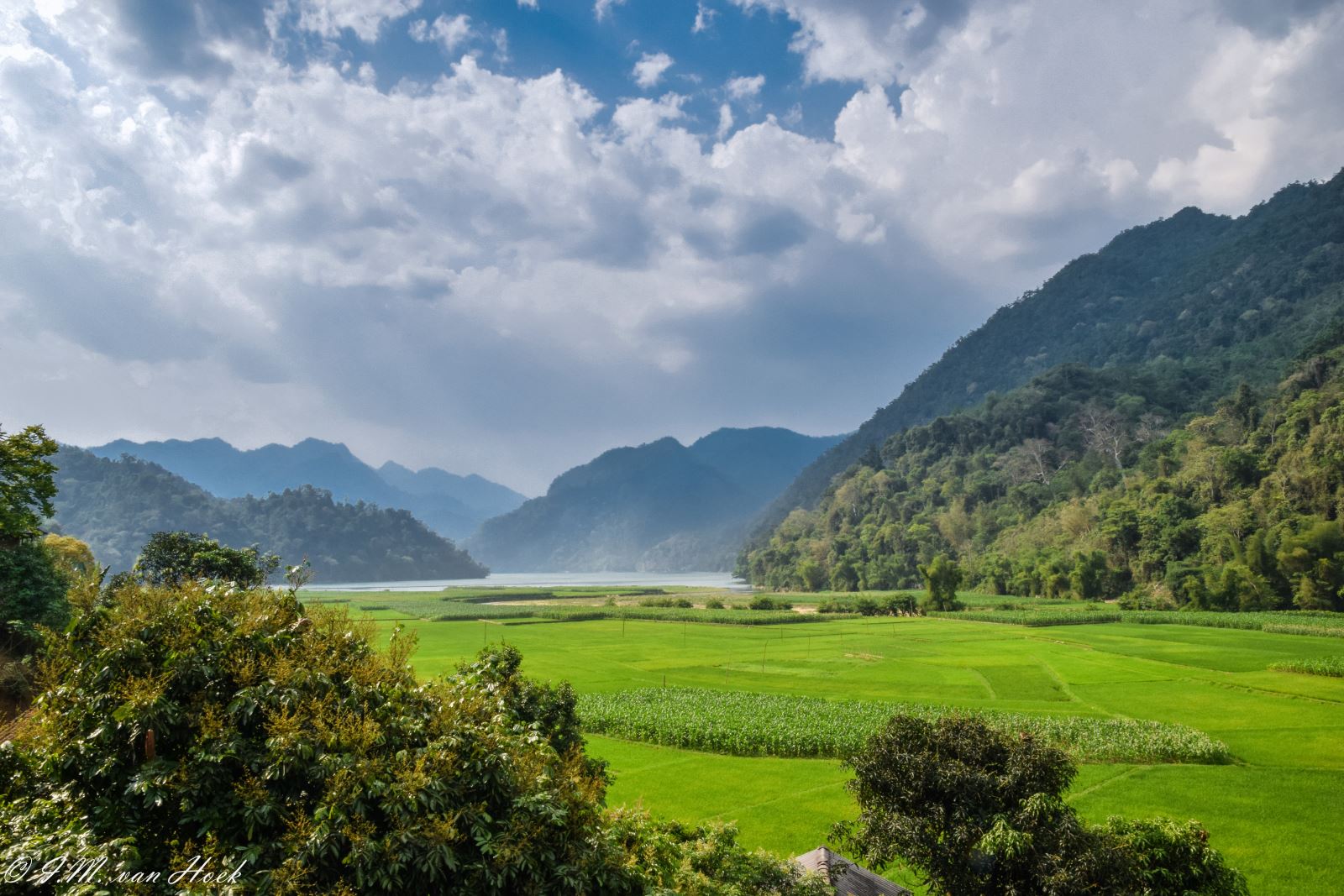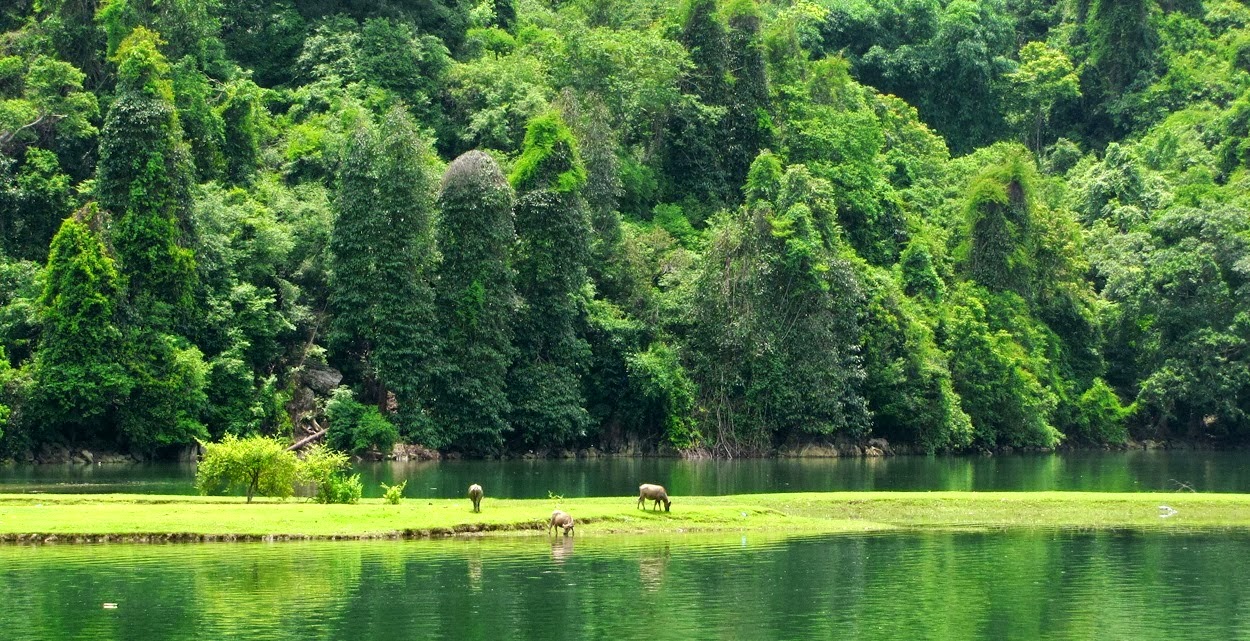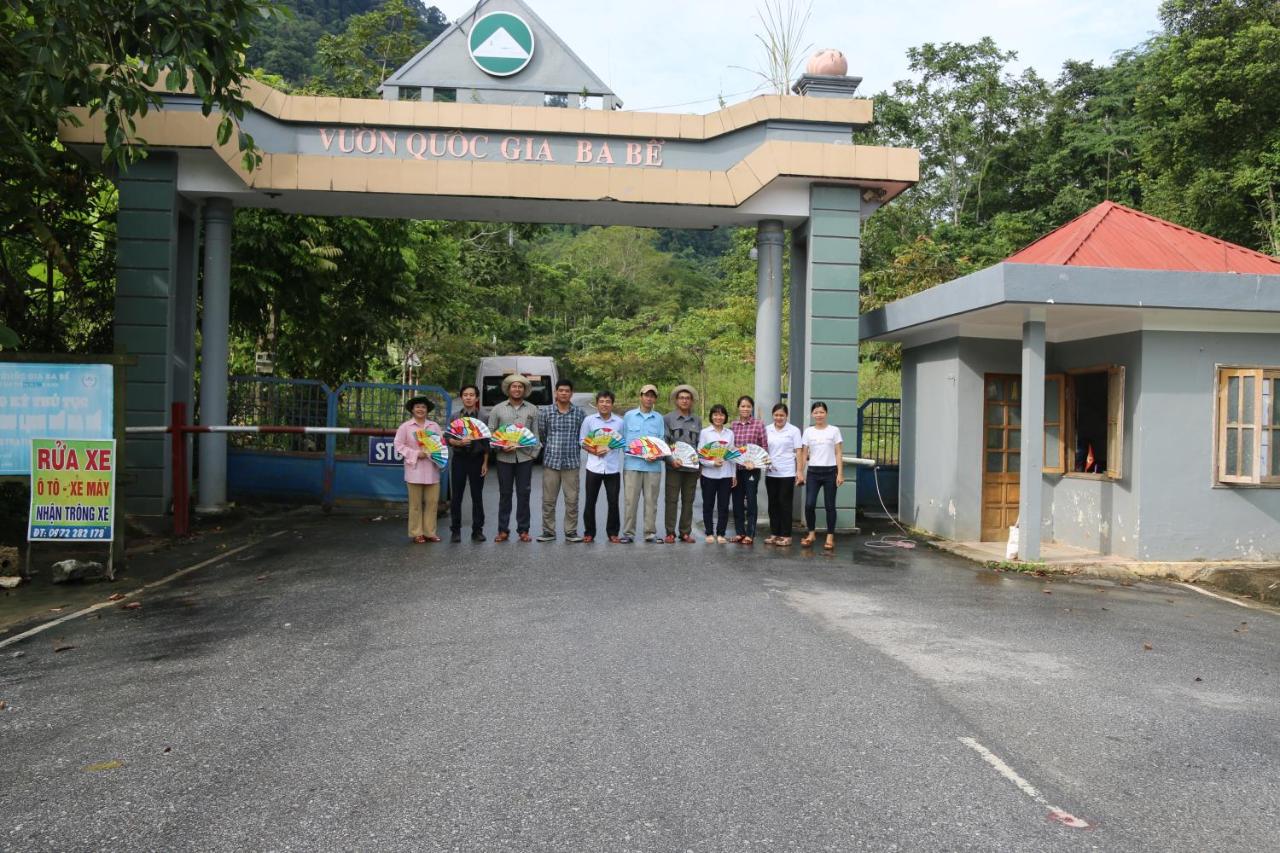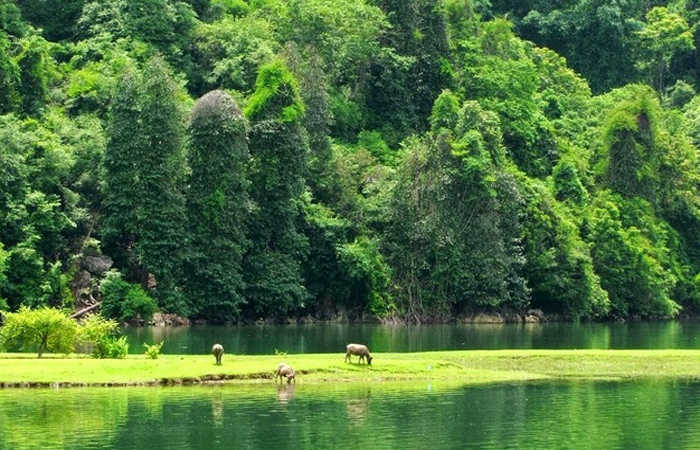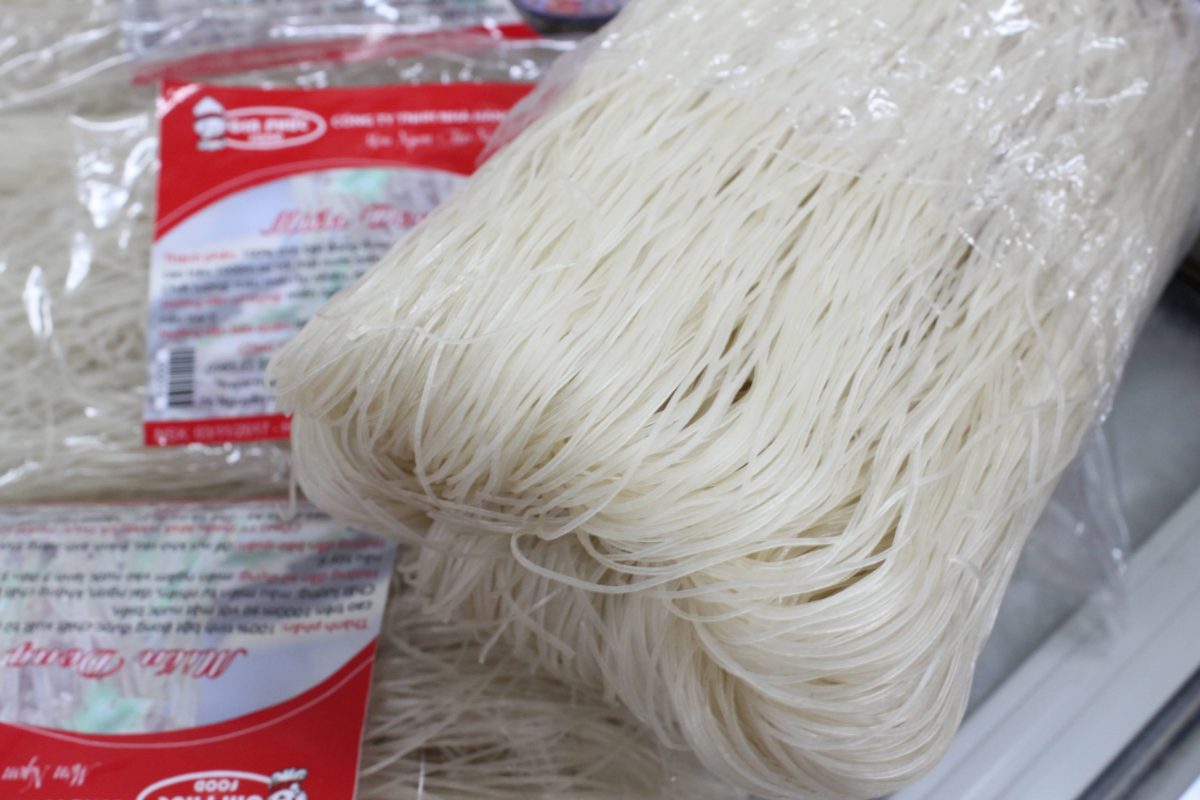Tourist destination
Na Hang tourist area
When it comes to Thai Nguyen tourism, Phuong Hoang Cave is definitely a destination you cannot miss. This place has been invested in building the Phuong Hoang Cave Tourist Area with full facilities and places for visitors to park their cars, eat, and rest. Besides, the location next to Highway 1B is also very favorable, you can easily combine your schedule to visit the Phoenix cave for a few hours and then move to the next tourist destination. Phuong Hoang Cave is located on the top of the mountain of the same name, famous for its beautiful stalactites and unique shapes. Next to the cave there is also the clear and cool Mo Go stream. Therefore, this place attracts many tourists to explore and experience. Phuong Hoang Cave is about 130km from Hanoi city. For groups of young people specializing in backpacking, this distance is very suitable for weekend trips. By motorbike, it will take you about 3 hours to travel, you can depart on Saturday afternoon, have fun for a day and then return on Sunday afternoon. If not, you can also take a bus from Hanoi to Thai Nguyen and then rent a motorbike to go out and explore this peaceful land. As a relatively new locality on Vietnam's tourism map, the destinations in Thai Nguyen have in common their wildness and simplicity, and the cost of accommodation and travel will also be cheaper than other places. As for those of you from remote provinces of the South and Central region, the fastest way to travel is to buy plane tickets to Noi Bai, Hanoi. Then from Hanoi go to Thai Nguyen. This trip you can combine to visit additional destinations in Phu Tho, Yen Bai, Bac Giang, Bac Ninh, fully discovering the beauty and nature of the Northeast mountains. According to some local people, the name Phuong Hoang cave comes from the fact that inside the cave there are many rocks and stalactites with magical shapes. This makes them think of the image of a phoenix flapping its wings majestically and powerfully. That's why the name Phuong Hoang cave was born. However, there is another legend associated with the name of this cave. Legend has it that once upon a time there was a pair of phoenixes who chose this mountain to live. They gave birth to two eggs in the cave, the father bird went looking for food and the mother bird was in charge of incubating the eggs at home. Then one day disaster struck, and this pair of birds was punished by heaven. The father bird returned from looking for food to find his wife had turned to stone. The father bird was sad but still hoped that his wife would come back to life, so he waited until he was exhausted and followed. That's why phoenix-shaped stalactites appear in this mountain cave, which is proof of the couple's unfortunate love story. Phoenix Cave is endowed with a very unique beauty with three separate floors. The first floor is called the rooftop, people still call it the Bat cave. This floor is located at the top, is the easiest to access and is also praised by many visitors. There are many strange stalactites here, and the afternoon light becomes even more sparkling and magical. The second floor is the middle floor, called Sang cave. The structure of the middle floor is quite unique with three doors from all sides and many openings to the outside. Therefore, sunlight can penetrate through and shine down on the shimmering rows. Coming here around noon, the rays of sunlight shine down beautifully so you can freely take photos. The third floor is also the deepest, called Dark cave. It is called this because sunlight cannot reach here. The space of Dark Cave is quite dark and lonely, so few visitors come down. Phoenix Cave is cool all year round, no matter how hot the sun is outside, the temperature inside the cave is only 15°C. Therefore, entering the cave you will feel extremely refreshed and comfortable, like entering an air-conditioned room without being cramped and stuffy.
Thai Nguyen
From January to December
4702 view
Na Hang tourist area
Nam Rut Waterfall - a place likened to a sleeping princess in the forest, is one of the tourist destinations in Thai Nguyen that young people are "rushing" to explore this summer. The "attracting" point of the waterfall is the green, fresh natural space and the dreamy beauty of a natural waterfall in the legendary land of tea. Nam Rut waterfall is located in Than Sa commune, Vo Nhai district (Thai Nguyen), so if you choose this location to avoid the heat, the journey to explore here will not be too difficult. Tourists can travel by motorbike or car depending on their own needs and preferences to make the journey to explore and travel to Nam Rut in the direction of Highway 3 or along Highway 1 to move from Hanoi to Thai Nguyen. In addition, if starting from Hanoi and do not want to travel by other means, visitors can also choose the train - an interesting choice to explore the Hanoi - Thai Nguyen route. If you follow provincial road 242, visitors will see many natural scenery here. Typically, the quiet hills or the beautiful winding Rong/Nghinh Tuong river. The most prominent are the eye-catching tea hills, giving visitors the feeling of being lost in a cool green world that can only be found in the legendary land of Thai Nguyen. On the way to Nam Rut waterfall, visitors will see the Rong/ Nghinh Tuong river famous for its clear blue water. Along this river are images of small fishing boats diligently casting nets. All create a very attractive natural scenery that everyone who sees it will fall in love with. The emotion of looking at the landscape paintings here will make your soul more open, happy and loving life. After following this route, visitors will reach Nam Rut waterfall in Thai Nguyen - a place considered like a sleeping princess in the forest. Hidden deep in the cliffs, Nam Rut Thai Nguyen waterfall possesses a very special, pristine and attractive beauty. In the rainy season, in the middle of majestic mountains, on top of limestone mountains with many forest trees, streams of white water rush down the Nghinh Tuong river, creating a large waterfall. All around this waterfall are surrounded by forests and mountains, the sound of falling water is really pleasant. If you come here in the fall, you will see the image of water pouring from above, whitening the entire sky. All blend together to create an extremely interesting orchestral music of this Thai Nguyen mountainous region. “The image of white water flowing down makes us feel relaxed and carefree. This place not only brings feelings of peace and quiet but also gives me the feeling that there is only nature and people surrounding each other without any noise, hustle and bustle of everyday life. The dreamy beauty of Nam Rut will make me fascinated and just want to stay forever" - Ms. Tran Tuyet Nhung (Tran Nhan Tong, Hanoi) expressed. "Nam Rut will definitely be the ideal destination for a weekend getaway for those who love to travel" - shared Mr. Nguyen Thang, a tourist from Dong Da (Hanoi). At the same time, Mr. Thang said that for those who love to participate in excursions and explore the beauty of amazing nature, Nam Rut waterfall will be a great choice. We will discover many interesting things here, because this waterfall is very magical and has a unique shape, it is a mixture of many different waterfalls with water spraying down into blurry white foam. Virtually beautiful like a fairyland. All create small streams of water flowing down below that look even more attractive and interesting. Along the riverbank are large, undulating rocks so visitors can sit and fish and enjoy the scenery. Here you will see life absolutely separate from the outside world. Also according to Ms. Nhung, if in the dry season, in Nam Rut, the water is only enough to seep through the moss on the cliffs, falling into the green river, creating sparkles all over the river surface under the golden sunlight, making the scenery of Nam Rut memorable. So beautiful, strange and rare. If you explore Nam Rut waterfall in Thai Nguyen in the dry season, the water at the waterfall only has a single small stream. However, in this season, visitors can also participate in fishing experiences or sit on large rocks at Nam Rut Thai Nguyen waterfall to admire the scenery. Sitting and admiring the scenery and breathing the green air here also makes visitors feel more relaxed. In particular, the scenery here will bring a more comfortable and relaxing feeling. You will feel that coming here is the right decision for your vacation and that of your loved ones.
Thai Nguyen
April to October
4521 view
Na Hang tourist area
Thai Nguyen was considered the land of "the capital of thousands of winds" during the resistance period. Coming to this place, we have the opportunity to find the origin of humanity with the Nguom Than Sa Stone Roof, with the majestic wild Duom Mountain, immerse yourself in the romantic love story of Cong and Coc... And one of Addresses not to be missed are the Museum of Cultures of Vietnam's Ethnic Groups - a place that preserves the identity of the Vietnamese ethnic community. About 80km from Hanoi, the Museum of Vietnamese Ethnic Cultures is located at 1 Doi Can, Thai Nguyen city. The museum was established in 1960 with the original name Viet Bac Museum. In 1990, it changed its name to the Museum of Cultures of Vietnam's Ethnic Groups and became one of the 7 National Museums of Vietnam. Built on a 40,000m² campus next to the romantic Cau River, at the intersection of Doi Can, Hoang Van Thu, Bac Kan and August Revolution streets, the Museum of Culture of Vietnam's Ethnic Groups is A large-scale architectural work with many artistic features, it won the Ho Chi Minh Prize for architectural works in the first phase of 2006. After more than 50 years of establishment and development with hundreds of research and collections, the Vietnam Museum of Ethnic Cultures is managing nearly 30,000 valuable documents and artifacts, which are the basis for perfecting the system. Indoor and outdoor display systems, well serving the public's visiting needs. Entering the Museum grounds, we will stop at the Solemn Pavilion. This place introduces general features of Vietnamese culture. In the large lobby, we can see the portrait of President Ho Chi Minh, the beloved leader of the Vietnamese people. The person holds three babies, representing the three regions: North - Central - South. The statue represents Uncle Ho's boundless love for the children of the three regions, while also demonstrating the policy of unity, diversity and solidarity of the Vietnamese people. Behind the statue of Uncle Ho is a large relief carved in wood simulating typical traditional festivals of ethnic groups from North to South: Khen dancing in the highland market, lion dancing in the spring festival in the valley, festivals Ka Te of the Cham people, buffalo stabbing festival of the Central Highlands people and ngo boat racing festival of the Southern people. Next, visitors will take turns visiting a system of 5 galleries including: Displaying and introducing the culture of ethnic groups of the Vietnamese - Muong language group (Kinh, Muong, Tho, Chut). The people live mainly by growing rice and fishing. In spiritual life, there is the custom of worshiping ancestors and traditional crafts are developed at a high level; Display and introduce ethnic groups of the Tay - Thai language group (Tay, Thai, Nung, Giay, Lao, Lu, San Chay, Bo Y). The people live mainly in stilt houses, grow rice in valleys, along rivers and streams, with a water supply system of ditches, ditches, cans, cans, and water troughs. The crafts of blacksmithing and weaving are quite developed with beautiful and delicate products. In particular, they have a rich spiritual life with many unique xoe dances and then songs; Display and introduce the culture of ethnic groups belonging to three language groups: Hmong - Dao (Hmong, Dao, Pa Then), Ka Dai (La Chi, La Ha, Co Lao, Pu Peo) and Tibetan Burmese (Lo Lo, Phu La, Ha Nhi, La Hu, Cong, Si La). The people are good at farming on upland fields and terraced fields. The market is a place to clearly express the cultural identity of the highlands, culinary culture, clothing culture, embroidery art, flower printing, music performances, flute dancing... Display introduces the culture of 21 ethnic groups belonging to the Mon - Khmer language group (Ba Na, Brau, Bru - Van Kieu, Cho Ro, Co, Co Ho, Co Tu, Gie Trieng, H're, Khang, Khmer , Kho Mu, Mang, Xinh Mun, Mnong, O Du, Ma, Ro Mam, Ta Oi, Xo Dang, Xtieng). The people reside scatteredly in the Northwest, Central Highlands and Southern regions. The economic life is mainly slash-and-burn cultivation, which is at a relatively high altitude, and fields are cultivated using the method of poking holes and planting seeds. Architecture of communal houses in the Central Highlands and pagodas of the Khmer people; Wicker crafts and community cultural festivals are unique cultural features of Mon - Khmer residents; Display and introduce the culture of ethnic groups belonging to the Austronesian language group (Cham, Gia Rai, Ede, Raglai, Chu Ru) and Han language (Hoa, Ngai, San Diu). Ethnic groups belonging to the Austronesian language group reside concentrated on the red soil plateaus of the Central Highlands and the Central coastal strip; Austronesian culture is strongly matriarchal. Ethnic groups belonging to the Han language group reside in all three regions: North, Central, and South; Han culture is strongly patriarchal. Each gallery with a rich and diverse system of documents and artifacts realistically recreates the residential landscape and cultural life of 54 ethnic groups, from the northern tip of Ha Giang to the cape of Ca Mau. with familiar images such as: highland markets, wild elephant hunting scenes, images of hole-punching and seed removal of northern ethnic groups, gong festivals of the Ede and Ba Na people in the Central Highlands; rivers and waters of the Southern people; traditional crafts, forms of cultural activities in costumes, music, cuisine, festivals in labor production... A special highlight of the Museum is the outdoor display system with spaces of 6 cultural regions: Northern high mountains, Valley, Midland - Northern region, Central region - Coastal region, Truong Son - Central Highlands, and Dong Nai. Nam Bo will bring very interesting experiences to visitors. Each cultural region has a festival space, a landscape structure with regional characteristics and a specific, original house as a highlight to introduce Vietnamese cultural values to visitors. . Here, visitors can also easily see with their own eyes many very familiar tools of the nation from ancient times such as a rice mill woven from bamboo slats, a plow made of rudimentary trees, thatched roofs, mud walls... It can be said that the Museum of Vietnamese Ethnic Cultures in Thai Nguyen is like the "common roof" of the community of 54 ethnic groups on the S-shaped strip of land. Visitors will have the opportunity to admire a panoramic picture. , learn about the origins, traditions, and cultures of ethnic groups across the country. Along with the Nui Coc Lake Ecotourism Area, the ATK Safe Revolutionary Base, the Museum of Cultures of Vietnamese Ethnic Groups has been and will be an attractive destination for all domestic and foreign tourists.
Thai Nguyen
From January to December
4914 view
Na Hang tourist area
Dinh Hoa (Thai Nguyen) - where 76 years ago (1947), President Ho Chi Minh and the leaders of the Party Central Committee and the Government chose to be the place to establish a safety zone (ATK), where important policy decisions were born. important and landmark of our Party in the August Revolution and the resistance war against the French colonialists. Journeying to historical places in the relic complex on historic autumn days, every Vietnamese person will feel the historical imprints and Uncle Ho's teachings still echoing somewhere. The first impression when arriving at ATK Dinh Hoa is a semi-mountainous land with mountainous terrain mixed with fields, streams, and villages of the Tay ethnic people. Cho Chu Valley is surrounded by rolling rocky mountains that look like sturdy, fortified trenches. Here, when stopping at dawn on May 20, 1947, Uncle Ho realized the advantages of the terrain to choose secret operating locations. Uncle Ho affirmed: "If there are good people and a good political foundation, there is a place where "advancing can attack, retreating can defend" (advancing can fight, retreating can hold). In particular, when choosing Tin Keo hill in Na Lom village, Phu Dinh commune (Dinh Hoa) as a place to establish a base, Uncle Ho affirmed: "Up above there are mountains, below there are rivers/There is land we grow, there is a beach we play/ Convenient to the Ministry of General Affairs/Convenient to the Central Government/The house is airy, airy, with a closed roof/Near people, not near the road." Therefore, among the hundreds of relics in the ATK Dinh Hoa Special National Historical Relic Area, every location is associated with the image of Uncle Ho, comrades in the Party Central Committee and the Government and historical events. history during the arduous years of resistance. Historical places have left their mark in the ATK Dinh Hoa relic area such as: Chu Market, Hang Pagoda, Khau Ty hill, Khuon Tat waterfall, De pass, Hong mountain, Diem Mac, Dinh stream, Dinh Bien, Bao Bien , Pu Don hill, Tin Keo province, the stilt houses where Uncle Ho lived and worked, the AKT exhibition house... During the revolutionary activities at ATK Dinh Hoa, Uncle Ho along with the Party Central Committee and the Government outlined the strategic path for the nation's long-term resistance war. In particular, Uncle Ho drafted "Revising the way of working", chaired the Politburo meeting to approve the Winter - Spring campaign plan of 1953 - 1954, determined to destroy the Dien Bien Phu stronghold group, ending the war. victory over the nation's long and arduous 9-year resistance war. During the arduous days of the resistance war, Uncle Ho's poem "Night Scene" was born in the mountains and forests of Dinh Hoa: "The sound of a stream is as clear as a distant song/The moon cages ancient trees, the shadows of flower cages/The late night scene is like a painting." , who hasn't slept yet/ Haven't slept because he's worried about his country." Today, at Hang Pagoda (Cho Chu Town), Uncle Ho's altar is placed in a solemn position with infinite respect. It was here that Uncle Ho lived in 1950 to direct the Winter - Spring war of 1953 - 1954.
Thai Nguyen
From January to December
4561 view
Na Hang tourist area
Located in Thai Nguyen province, Nui Coc Lake tourist area is one of the most attractive destinations in the Northern region. This large eco-tourism area is about 16 kilometers from Thai Nguyen city center, and about 70 kilometers from Hanoi centers. Nui Coc Lake is an artificial lake, with an area of up to 25 hectares, with 89 large and small islands in the lake, creating a poetic natural landscape. Along with the touching love story of Nui Coc Lake between Coc and Cong, this place becomes more attractive than ever. Not only that, the tourist area also has many unique attractions for you to explore. Thai Nguyen is a northern province of Vietnam, so the weather here also changes according to the four seasons of the year. According to Klook's experience, traveling to Nui Coc Lake is most beautiful from March to September. During this time, the weather in Thai Nguyen is sunny, little rain, very suitable for participating in outdoor activities. Besides, this is also the time when Nui Coc Lake tourist area organizes many art and entertainment activities, creating a vibrant atmosphere for this place. The remaining months fall in winter, which is the cold season in Thai Nguyen, not suitable for outdoor entertainment and exploration activities. However, if you just want to find a resort with pure nature, Nui Coc Lake is still a suitable choice. Coming to Nui Coc Lake, you can participate in experiences such as: Playing at the Water Park, enjoying water music performances, visiting wildlife gardens, visiting caves,... and many more experiences. other attractions.
Thai Nguyen
From March to September
4672 view
Na Hang tourist area
Thach Long Pagoda is known as the "sacred pagoda in the cave", located in Cao Ky commune, Cho Moi district, Bac Kan province. This is a sacred temple in the North with many magical fairy tales. The pagoda was built around the 18th century with many spiritual stories, and it is also associated with a fierce historical period of the nation. On November 2, 2011, Thach Long Pagoda was recognized by the People's Committee of Bac Kan province as a provincial-level traditional historical-cultural relic. Currently, the temple still attracts the attention of pilgrims from far and wide. Thach Long Pagoda is in Bac Kan, so the climate is cool and pleasant all year round, so you can travel to Bac Kan at any time of the year. The most ideal time to go to Bac Kan is in the summer (from May to July) because at this time you will admire the most wonderful natural scenery. Coming to Thach Long Pagoda from May to July, you will feel the difference between the two types of atmosphere inside and outside the cave. At the same time, you can easily go to Thach Long Pagoda when you come at this time. The pagoda still preserves many ancient spiritual stories. According to people in Bac Kan, in the past, people in Vi Huong - Bach Thong commune went down the Cau River to bring back the Shakyamuni Buddha statue by boat to worship Hoa Son. The Buddha statue is very heavy, so when going back up to Vi Huong, to Bo Mi, Cao Ky commune, the boat kept spinning and could not move. Until it was dark, the people going to pick up the statue had to set up tents to sleep in Bo Mi until the next day. calculate further. The next morning, when they woke up, those who went to process the statue panicked and could not see the Buddha. They had to light a large bunch of incense and pray to know where the Buddha was and build a temple to worship there. Before he could finish speaking, the incense smoke flew to the other side of the river, moving inwards towards the mountain. Following the direction of the smoke, they discovered the Buddha statue sitting at the highest point in a beautiful and spacious cave. Feeling the mystery of Buddha, people built a pagoda right here, and named it Thach Long (Stone Dragon), meaning that this is a pagoda located in a sacred cave. Thach Long Pagoda was built around the 17th century, so it has partly witnessed the heroic history of the nation in the resistance war against the French colonialists and American imperialists. At that time, Thach Long Pagoda was also used by our soldiers as a weapons warehouse. During the resistance war against the French colonialists, Uncle Ho visited this place 3 times. During the 1954 Dien Bien Phu campaign, the pagoda became a weapons transport station and a secret arsenal for our army during battle. By 1986, Thach Long Pagoda was partially restored by the local government and local people. Currently, the pagoda is considered a typical project to meet the people's desire for cultural and spiritual activities.
Thai Nguyen
May to July
4714 view
Na Hang tourist area
Dau Dang Waterfall is one of the symbols of Bac Kan tourism, attracting tourists with its majestic but equally poetic beauty. Originating from the Nang River, weaving through forests and cliffs, this place is truly an impressive natural picture, an ideal destination for weekend vacations. Dau Dang Waterfall is a waterfall formed by the Nang River, in Ba Be National Park, about 16 km from the center of Cho Ra town, Bac Kan. The river flows under Lung Nam limestone mountain, forming Puong cave. When flowing to Hua Tang village of Nam Mau commune, it is blocked by hundreds of large and small rocks. In this location, the terrain has a slope of about 500 m, thanks to which the majestic and impressive Dau Dang waterfall was born today. The waterfall falls strongly into the Nang River gorge, passing through giant limestone rocks stacked on top of each other. The waterfall is divided into 3 sections, the first section has water pouring down from above with strong force and quite tortuously. In the second part of the waterfall, the water splits into two different streams. In the third part, the water flows smoothly, bringing a dreamy beauty, attracting tourists. Not only famous for its heavenly scenery, Dau Dang Bac Kan waterfall also has great significance for local agriculture. Every year, the water of this waterfall will transport a large amount of silt from upstream, making the trees and fields greener. Now, along with Ba Be Lake, Dau Dang waterfall is an attractive Bac Kan tourist destination that tourists should not miss. Normally, when traveling, tourists will combine visiting Ba Be Lake and Dau Dang waterfall. Therefore, you must choose the right time to fully explore the beautiful natural scenery in both of these locations. In winter, the weather here is quite cold, in summer and autumn there will be sudden rains. Therefore, if you have the opportunity, you should go to the waterfall in the spring months, the scenery is beautiful and the weather is also quite favorable. If you want to admire the majesty of the waterfall and need beautiful light to take photos, morning is the best time to depart. Dau Dang Waterfall is one of the most famous landscapes in Bac Kan, with a special attraction for tourists. The stream of water falls from above, colliding with rocks, creating a resounding noise that can still be heard clearly from several kilometers away. Coming closer to the waterfall, visitors will see the majestic beauty of the waterfall and the mountain landscape. Looking up from below, the water splashes white foam, creating sparkling, heart-stoppingly beautiful images. On beautiful days, sunlight will shine through the water surface, making the water bubbles look exactly like diamonds hidden at the bottom of the waterfall. That scene makes many tourists gasp in amazement because of its wild beauty mixed with a bit of mystery and extreme rarity. Surrounding Dau Dang waterfall are vast, green mountains and forests, creating a fresh, airy atmosphere. Trees grow between majestic cliffs, proving incredibly strong vitality. The water flows without a moment of rest, pouring down the Nang River, passing through large limestone rocks stacked into stone formations. On both sides of the bank are rows of lush green trees, spreading shade throughout the entire area.
Thai Nguyen
April to October
5466 view
Na Hang tourist area
Puong Cave is a famous tourist destination located in Ba Be National Park, this is a karst cave in Lung Nham limestone mountain on Nang River in Ba Be district, Bac Kan province. Puong Cave is located in the north of Ba Be National Park and about 5km from Cho Ra town center. Puong Cave was created by the Nang River flowing through Lung Nham limestone mountain. Puong Cave has a length of 300 m, a ceiling of over 20 m high and an average width of 30 m with a mysterious natural scenery. Setting foot inside, visitors will witness many towering cliffs and stalactites with extremely special shapes and colors. This is also home to 23 bat species with numbers reaching up to tens of thousands. Puong Cave belongs to Ba Be National Park with many rocky mountains and forests surrounding it, and Ba Be Lake acts as an 'air conditioner', helping this place have cool weather. batch all year round. If you plan to travel to Ba Be National Park and visit Puong cave, you should come in the summer (May to September), when you will best feel the coolness here. In addition, from the 9th to the 11th of the first lunar month, in Ba Be, the Tay ethnic group's Long Tong festival also takes place. If you have the opportunity, remember to arrange to attend. Unlike many caves, to travel to Puong cave, visitors are forced to go by boat inside, the reason is that Puong cave was formed by the Nang River flowing through Lung Nham limestone mountain. When you move closer to the cave, you will immediately see that the cave entrance is not too big, but is filled with wildness. Exploring the cave on dugout boats, slowly floating into the cave entrance will definitely be very interesting. Inside Puong cave, visitors will immediately witness the magnificence of stalactites in diverse shapes falling from above, along with a system of tall, wild cliffs. The space inside is extremely spacious, combined with the water below to create a very cool feeling. If you don't know, Puong cave has a length of up to 300m, the cave arch is more than 20m high. As you move deeper, the space of Puong cave will become darker and the light will become weaker. At this point you will need a flashlight to see the scenery around you clearly. From here, visitors will see more clearly many stalactites pouring down like a waterfall, many gray stone blocks of diverse shapes stacked on top of each other very strangely. Moreover, inside Puong cave there is also a fairly flat mudflat where boats can come and anchor to help visitors go inside the cave easily. Puong Cave consists of two adjacent caves, Upper Cave and Lower Cave, also known as Puong Tenh and Puong Tau. The road here is very easy to navigate, thanks to that, many "thousand Like" check-in photos have been created here. Currently, Puong Cave is a tourist destination that many tourists choose to visit. Coming here, in addition to Puong cave, visitors can also choose to visit many other places in Ba Be national park such as Ba Be lake, Dau Dang waterfall, Hua Ma cave, An Ma temple, Ban Vang Silver waterfall, etc. ..
Thai Nguyen
May to September
5518 view
Na Hang tourist area
Fairy Cave is located in Phja Trang mountain in Luong Ha commune (Na Ri district). Located more than 50km from the center of Bac Kan province. Seen from afar, Nang Tien Cave looks like a young girl sleeping soundly. Nang Tien Cave is located deep inside the mountain about 60m, the cave entrance is 6m wide and 6m high, the cave is about 30-50m high. The cave is surrounded by trees, so when entering the cave from outside, visitors will feel a cool, pleasant atmosphere and the cool, gentle scent of plants. When entering the cave, visitors will be surprised by the magical beauty created by the stalactites and stone columns. Fairy Cave is known for its wild beauty bestowed by nature and mysterious legends about the 7 fairies. Those elements have painted a fanciful and mysterious cave that is famous in Vietnam today. You can visit Fairy Cave at any time of the year. Because the cave is surrounded by trees, the atmosphere here is always cool even on hot sunny days. But please note that if you want to visit Fairy Cave from May to October, you must pay attention to the weather forecast, because during these months, Bac Kan province often rains, which will affect the tour itinerary. Your Fairy Cave. When you enter the cave entrance, you will feel like you are entering a completely different world. The darkness inside the cave contrasting with the light outside will make your senses more sensitive. You will clearly feel the gurgling sound of flowing water, the blurry scenery brought by steam, the gentle atmosphere... The entrance to the Fairy Cave is surrounded by cool stone slabs. Looking up at the cave ceiling, you will see stalactites formed millions of years ago. There are stalactites that have appeared a long time ago, like stone towers flowing back from the ceiling of the cave to the underground, forming solid stone columns, making the cave here even more solid. Going deep inside is the large central space of Fairy Cave. Surrounded by other small caves, the scenery here is even more sparkling and magical. Stalactites and stone slabs with strange shapes formed a long time ago on the ceiling of the cave will make you think of beautiful flowers. Every corner in Fairy Cave is associated with a story full of mystery and fantasy. It can be called "Fairy Pond", according to legend, it is the place where fairies use to bathe and play every day. Going through the "Fairy Pond" you will see sunken terraces with stagnant water, depending on the weather, the amount of water stagnant inside is more or less. That scene will make you feel like you are lost in the terraced fields of the people. high mountainous areas. That may be the reason this place is called “Fairy Field”, where fairies would plant and harvest crops. The most magical fairyland is probably the "Fairy Chamber", this place is made up of countless stalactites of all different shapes and brilliant colors and especially has only one path. Seeing all those scenes, you will immediately think that this is the bedroom of fairies in a fairyland. This translucent beauty is also found in the sparkling stalactites falling to the ground, looking like the shiny, smooth hair of beautiful fairies.
Thai Nguyen
May to October
5794 view
Na Hang tourist area
Ba Be National Park is located more than 200 km from Hanoi capital, is an ideal eco-tourism destination for those who love nature and like to explore. Worthy of the title "treasure of Bac Kan mountains and forests", Ba Be garden always makes visitors admire and enchanted every time they have the opportunity to admire it. Coming here, you will be immersed in the wild natural scenery, admire the diverse flora and fauna ecosystem, or more interestingly, enjoy delicious local dishes. Ba Be National Park belongs to Ba Be district, Bac Kan province, stretching across 5 communes of Quang Khe, Khang Ninh, Cao Tri, Cao Thuong and Nam Mau. Dubbed the "treasure of Bac Kan mountains and forests", this place is famous for many beautiful landscapes. Among them, the most prominent is still Ba Be Lake - one of the largest natural freshwater lakes in Vietnam and the world. Ba Be Garden possesses a diverse ecosystem with more than 1,000 plant species and 80 rare animal species. Besides biological diversity, this National Park also attracts visitors with its dreamy beauty that is rare to find anywhere else. Currently, many types of tourism are developing in Ba Be, promising to bring visitors unforgettable experiences. Ba Be Garden is surrounded by primeval forests and rocky mountains, cool all year round. Therefore, the most ideal time for you to travel to Ba Be National Park is in the summer months. If you want to enjoy the bustling festival atmosphere and participate in folk games, you can go in January, around the 9th - 10th day of Tet. A world-famous landscape, Ba Be Garden is both a large biosphere reserve and a flooded Ramsar site on limestone mountains. Coming here, visitors will admire the magnificent cave system, diverse and rare flora and fauna. If you have the opportunity to visit this National Park, do not forget the list of locations including: Puong Cave, Ba Goa Island, Dau Dang Waterfall, Ao Tien, Ba Be Lake, Hua Ma Cave, Tham Phay Cave.
Thai Nguyen
From January to December
5439 view
